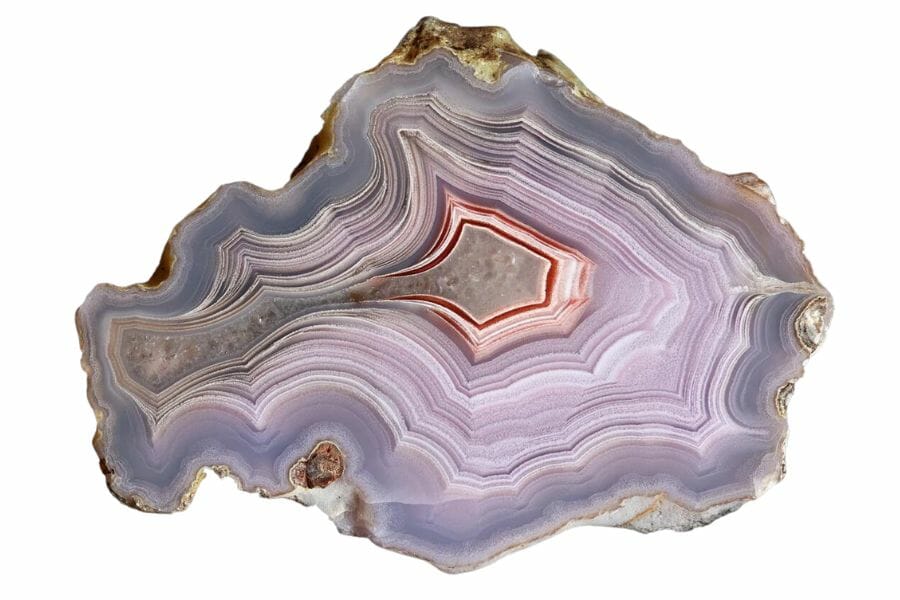If you were to take a journey deep into the heart of Tennessee, you’d find yourself stepping on more than just the rich soil that paints this state. Beneath your feet lies a treasure trove of rocks, minerals, and gems!
Imagine unearthing a piece of limestone, one of the types of rocks found in Tennessee, and realizing that this rock was formed from ancient sea creatures that once called this place home.
Picture stumbling upon a gleaming piece of quartz, a mineral that’s been used in everything from jewelry to technology, and knowing that it was created deep within the Earth’s crust.
And if you’re really lucky, you might even come across gems that catch the light in just the right way, making you feel like you’ve found your very own piece of buried treasure.
Tennessee isn’t just a land of beautiful mountains, rolling hills, and soulful music. It’s a geologist’s dream! With every step, there’s a chance to discover a new rock or mineral, each with its own unique tale.
So, as we delve deeper into the geological wonders of Tennessee, prepare to be amazed by the rich tapestry of stories that the ground beneath us holds.
A List of The Common Rocks, Stones, and Minerals Found in Tennessee
Tennessee boasts a collection of rocks, minerals, and gems that truly capture the essence of the state. Learn more about what this state has to offer for rockhounds and collectors:
The Tennessee State Rock, Mineral, and Gem
These are the rock, mineral, and gem that have been chosen to represent the state of Tennessee:
| Tennessee State Rock | Limestone |
| Tennessee State Mineral | Agate |
| Tennessee State Gem | Tennessee river pearl |
Make sure to familiarize yourself with the Tennessee Department of Environment and Conservation (TDEC)‘s guidelines and make your adventure both fun and respectful!
Unakite
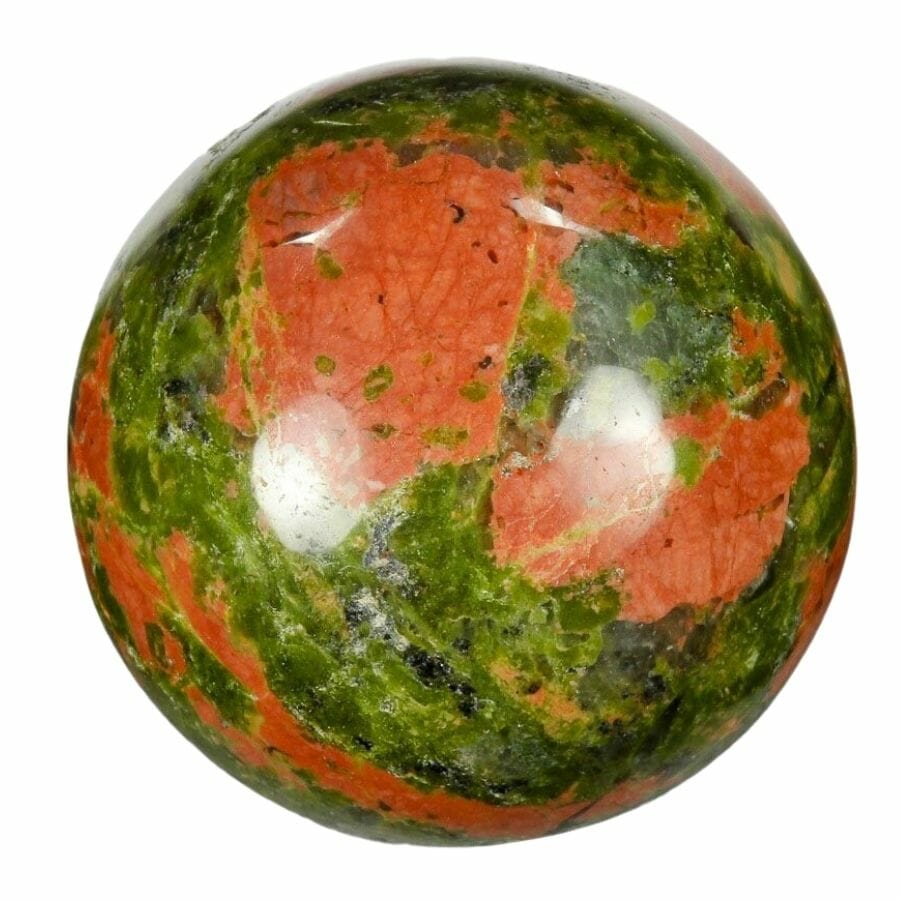
Unakite is a rock that’s made up of different minerals that give it a unique look. Imagine patches of pink, green, and sometimes even orange all swirled together.
It’s made up of three main parts: feldspar, which gives it that pretty pink color; epidote, which adds the green shades; and sometimes a dash of quartz, which can be clear or orangey.
The colors mingle together to create a rock that’s both beautiful and interesting to look at.
Unakite is a metamorphic rock, which means that it’s formed under a lot of heat and pressure inside the Earth. Imagine squeezing playdough in your hand really hard, and you’ll get an idea of how these rocks form.
The minerals get mashed together, and over time, with a lot of heat from the Earth, they turn into the cool-looking unakite.
People in Tennessee and all over really like unakite. Some use it for making jewelry like necklaces and bracelets.
Others like to keep a piece of unakite around just because it’s pretty to look at. And some even think it has special properties that help them feel more balanced and peaceful.
Where you can find unakite in Tennessee
- Unaka Mountains
- Roan Mountain
- Rag Mountain
Calcite
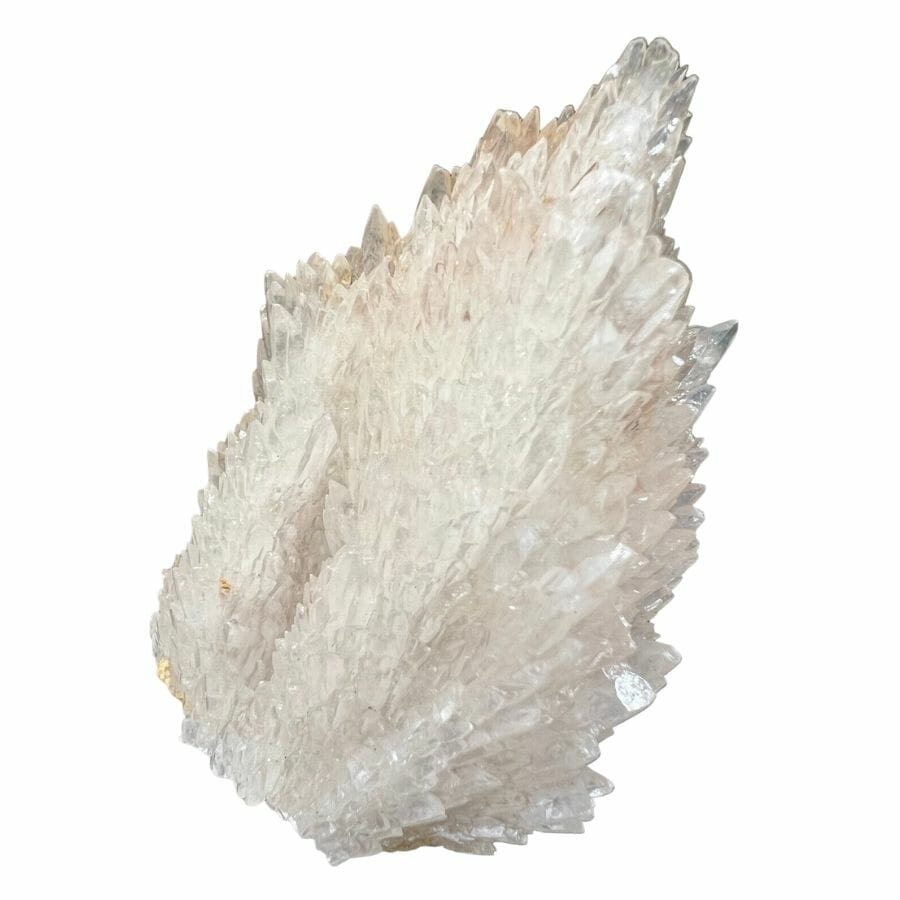
Calcite is one of those awesome minerals that you might stumble upon in the great state of Tennessee. It’s pretty common but no less exciting! Calcite comes in a whole range of colors, like white, yellow, red, and even blue.
It’s a mineral that’s mostly made up of calcium carbonate. That might sound like a mouthful, but it’s something you can find in things like seashells.
Calcite forms in different ways. It can come from the shells of tiny sea creatures that lived millions of years ago, or it might form from hot, mineral-rich waters that move through the cracks in rocks.
Over time, these minerals build up and create beautiful calcite crystals.
Because calcite is a carbonate, if you put a drop of acid on it, it’s going to fizz. This helps identify it among other rocks and minerals.
Calcite has a sparkling appearance and the way it can split light into beautiful rainbows make it a favorite for collectors.
It has a property where it can split light into two rays, making objects behind it look double. This is called “double refraction.”
But it’s not just pretty to look at. Calcite is used in all sorts of everyday things like toothpaste and even cement for buildings. It’s also used in making steel. Because of this, calcite is one of the most valuable rocks in Tennessee.
Where you can find calcite in Tennessee
- Elmwood Mine, Carthage
- Kingsport, Sullivan County
- Buck Miller Mine, Monroe County
Pyrite
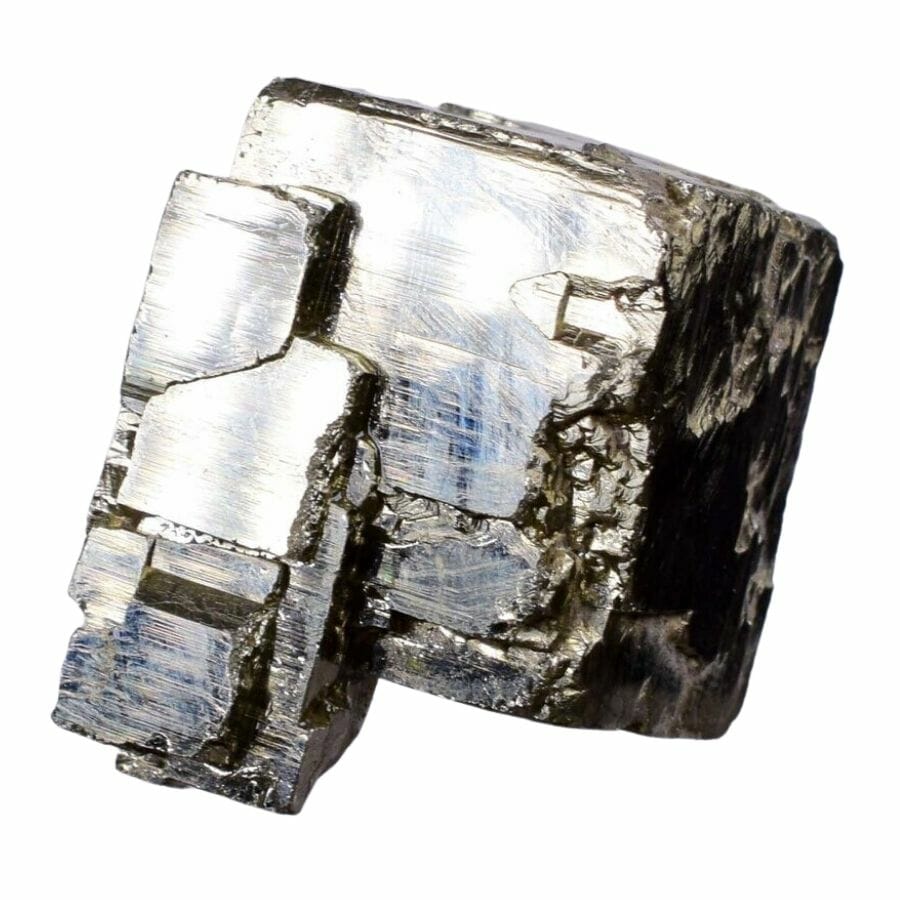
Pyrite’s got a nickname that you might have already heard: “Fool’s Gold.” It’s got that shiny, gold-like sparkle that can make people think they’ve hit the jackpot. But don’t be fooled; though it’s not real gold, pyrite is a treasure in its own right.
This mineral is a combination of iron and sulfur, and it forms in a variety of ways. Sometimes it grows around organic material in layers of clay or shale, and other times it forms in the cracks of rocks where hot fluids move through.
These fluids carry minerals that build up and crystallize into pyrite. The result is stunning, metallic crystals that can be shaped like cubes or other cool forms.
Aside from its dazzling appearance, pyrite has been used in all sorts of ways. In the old days, pyrite was struck against flint to create sparks for starting fires. It’s also been used in making batteries, and, believe it or not, even some types of paper!
But for many, the real joy of pyrite is in its natural beauty. Collectors and rock lovers prize pyrite’s unique, shiny appearance, and its surprising shapes.
Where you can find pyrite in Tennessee
- Edwin Patrick Farm Prospect, Hardeman County
- Shiloh Prospect (Ledford Prospect), Copper Ridge Mining District
- Wilder Hollow Prospect, DeKalb County
Quartz
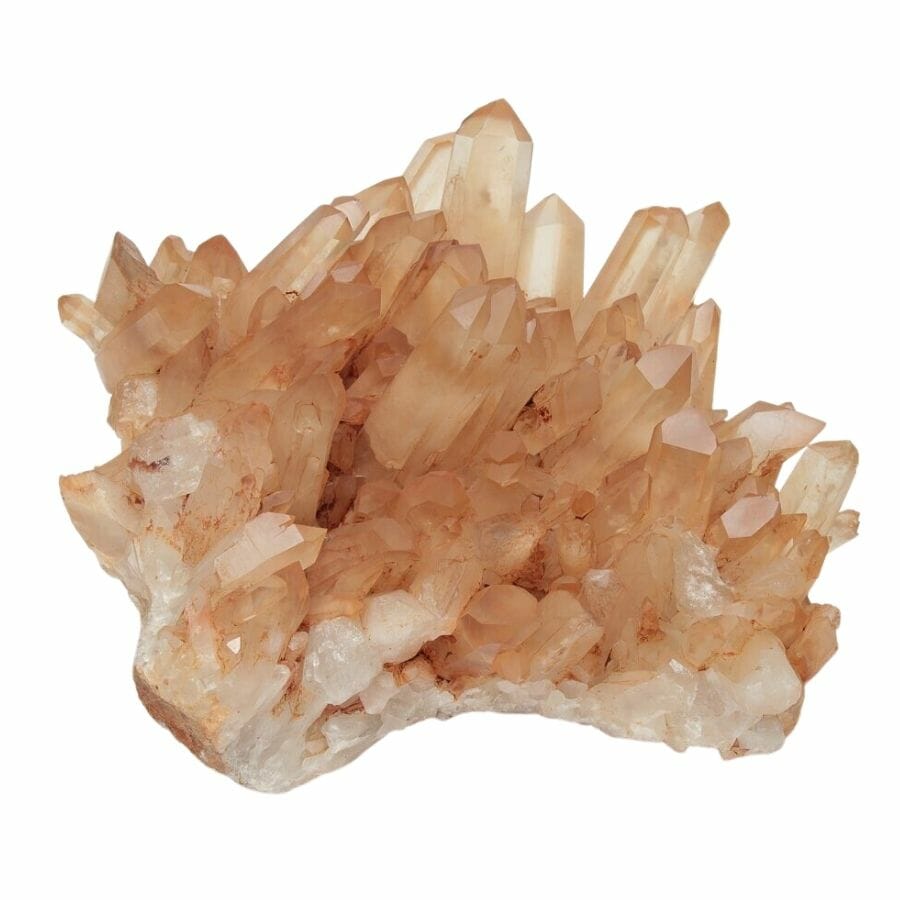
Quartz is one of those rocks that’s as amazing as it is common. You can find it all over the place, including in the beautiful state of Tennessee.
Quartz is made up of silicon and oxygen. When these two get together in the right way, they form crystals that are clear as glass.
But that’s not the only way you’ll find quartz. Sometimes, other minerals join in and give quartz different colors like purple, yellow, or even pink. That’s how you get varieties like amethyst or citrine!
The formation of quartz can happen in a bunch of ways. Sometimes, it forms when hot, watery fluids flow through rocks and leave behind minerals that turn into quartz crystals.
Other times, it grows slowly as other rocks melt away around it. The cool thing is that these different ways of forming give quartz all sorts of shapes and sizes.
This mineral is gorgeous to look at. People make jewelry out of it, and collectors love to have pieces of quartz on their shelves.
But it’s not just pretty; it’s also super useful. Quartz is used in electronics like watches and computers because it can help keep time really accurately.
Where you can find quartz in Tennessee
- Hambright Mine (Lord Mine), Red Hills Mining District
- H. N. Johns Prospect, Copper Ridge Mining District
- J. T. Burns Prospect, Laconia
Hematite
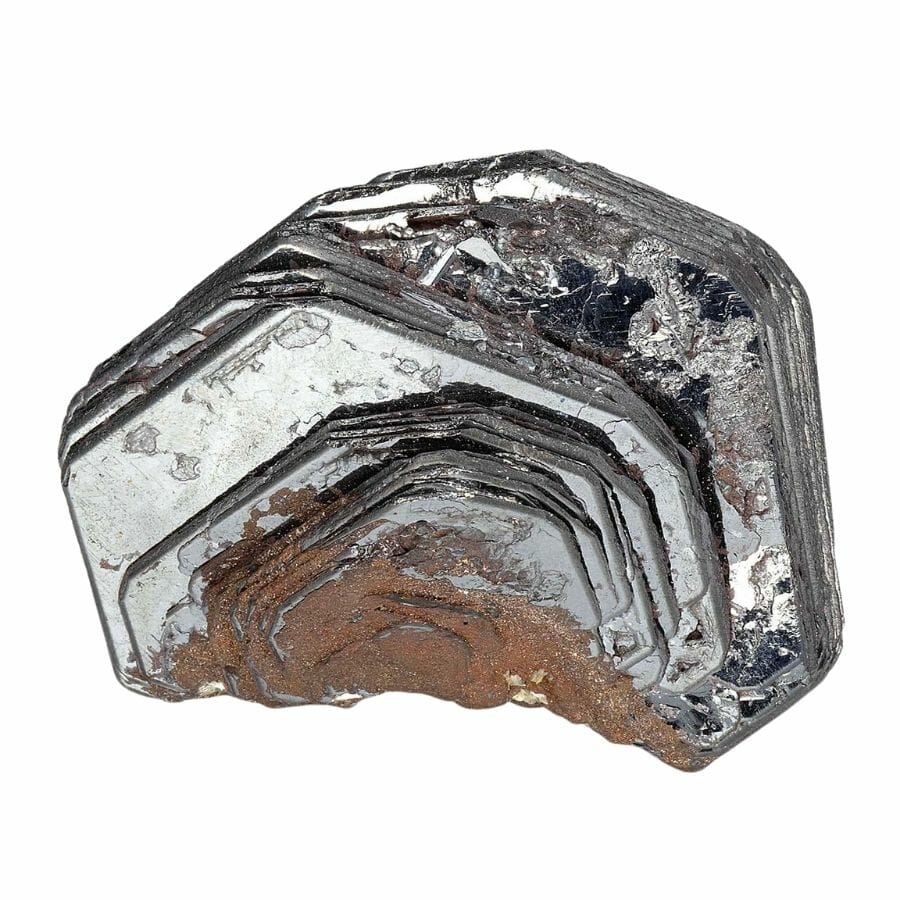
Hematite is one of those super cool minerals that’s not only amazing to look at but also has some interesting stories to tell. You might find this mineral right here in Tennessee, and it’s worth knowing about!
Hematite is often a silvery, shiny gray, or even a reddish-brown. It has a metallic look that’s just out of this world.
But here’s where it gets even more fascinating: if you crush it into a powder, it turns a bright red color. Some people even say it looks like blood. That’s why it’s called hematite, from the word “haima,” meaning blood in Greek.
It’s mostly made of iron and oxygen and forms in places where there was once standing water, like ancient lakes or hot springs. Over time, as the water evaporates, the minerals left behind come together to create hematite.
Aside from looking awesome, hematite is really important in our everyday lives. It’s a key source of iron, which we use to make things like cars, bridges, and buildings. It’s strong and tough, just like the rock itself!
Hematite is also used in jewelry and artwork. Some people even think it has special healing properties, helping to make you feel more grounded and calm.
Where you can find hematite in Tennessee
- Memphis Pit, Shelby County
- Hambright Mine (Lord Mine), Red Hills Mining District
- Blockhouse Iron Prospect, Blount County
Limestone
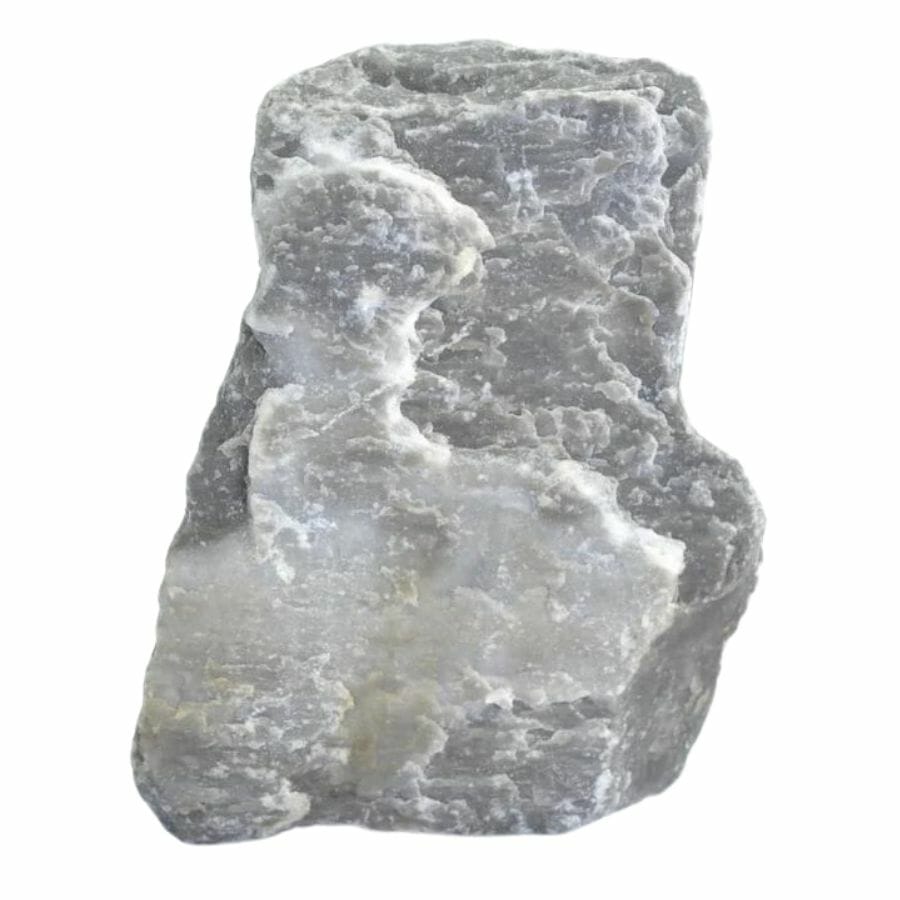
Limestone isn’t just a simple rock; it’s like a history book of Earth, holding stories of ages gone by. It’s a sedimentary rock, which means it’s formed by layers of stuff settling down over a long time.
This “stuff” is mostly the shells and bones of sea creatures like clams and corals.
Picture this: millions of years ago, there were seas with tiny creatures swimming about. When these creatures passed away, their shells and skeletons sunk to the bottom. Over time, layer upon layer of these shells and bits piled up.
With the squeeze of Earth’s natural processes, all these layers pressed together to form what we now call limestone.
Limestone is super useful. Builders have been using limestone for ages because it’s strong and can last a long time. If you see a big, grand building, there’s a good chance limestone played a part in it.
This rock is also used to make cement, one of the ingredients in concrete. Without limestone, we wouldn’t have our roads, bridges, and sidewalks.
But the fun doesn’t stop there. Limestone landscapes can create cool natural wonders like caves and springs. Some of these Tennessee caves are like hidden underground worlds, all thanks to the magic of limestone.
Where you can find limestone in Tennessee
- Wayne County limestone exposures
- Limestone Pit, Benton County
- South Pittsburg Quarry, Marion County
Galena
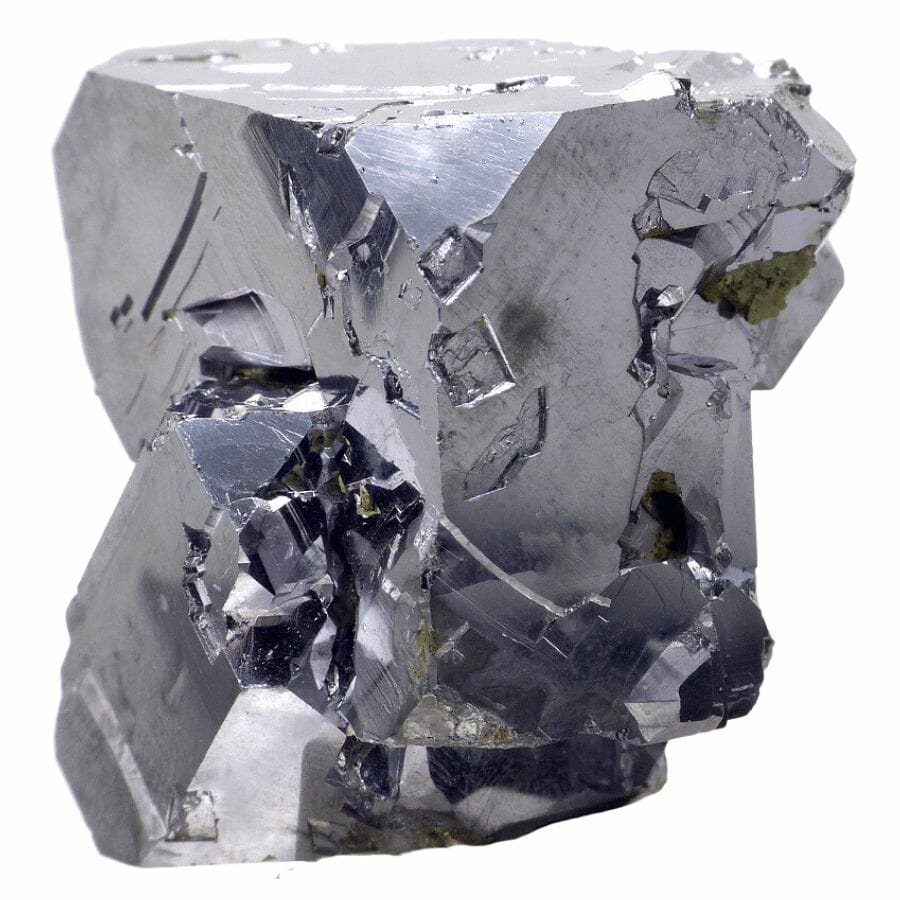
Among the beautiful crystals found in Tennessee, galena is one that deserves special mention. With its shiny metallic luster and cool cube-like shapes, galena has a unique charm that’s hard to miss.
Galena is made up of lead and sulfur. It forms in clusters of shiny silver cubes that are both fascinating and beautiful to look at. These cube shapes form as the galena cools and crystallizes deep underground.
This mineral is usually found in places where hot fluids flow through the cracks and spaces in rocks. These fluids carry minerals like lead and sulfur, and when they meet the right conditions, they come together to form galena.
Galena’s sparkle makes it a favorite for rock collectors. But it’s not just a pretty face. Galena is a big deal because it’s the most important ore of lead.
That means we can get lead from it, which is used in batteries, shields against X-rays, and lots of other things.
Additionally, galena has another surprise up its sleeve: silver! Yes, some galena rocks also contain silver, making them even more valuable.
Where you can find galena in Tennessee
- Gordonsville Mine, Carthage
- Wilder Hollow Prospect, DeKalb County
- Felknor Mine, White Pine Mining District
The Gemstones Found in Tennessee
Tennessee is more than just music and mountains; it’s a treasure trove of gemstones! You can find a more comprehensive look into the kind of gemstones you can find in the state with our guides:
Chalcedony
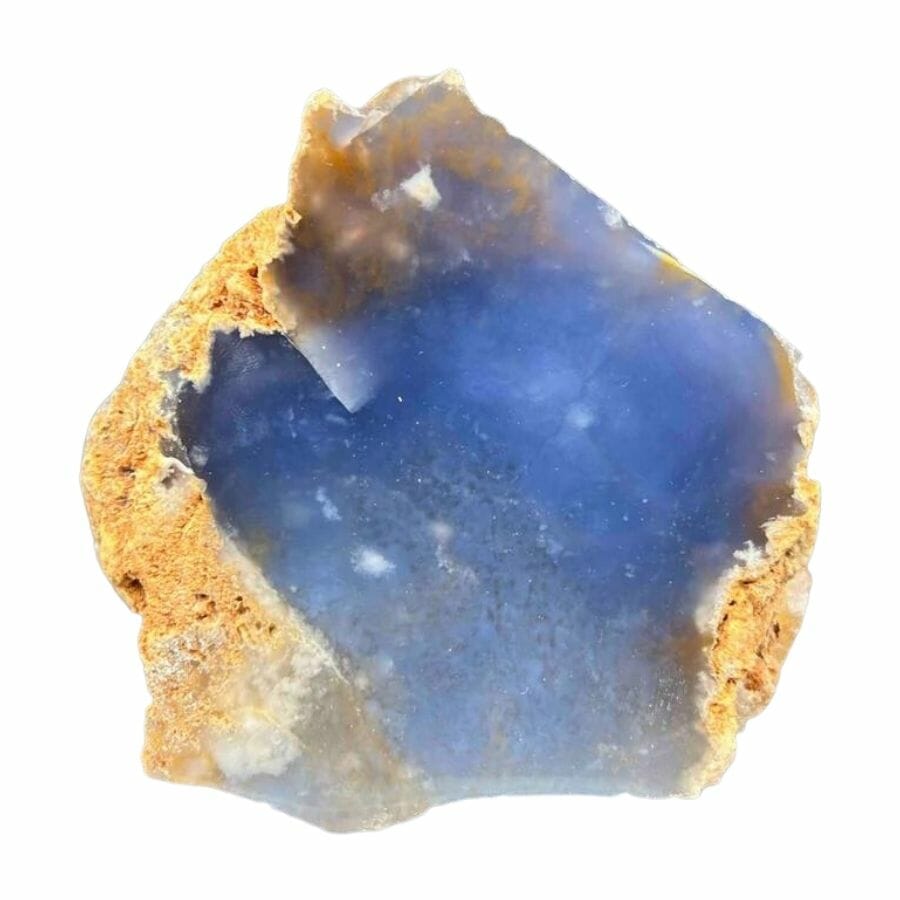
Chalcedony might not be as flashy as some other gems, but it has a soft, waxy luster. It can also be found in a rainbow of colors, from blues and greens to reds and yellows.
It’s made up of teeny, tiny crystals of quartz, all packed together so tightly that you can’t see them with just your eyes.
This mineral often forms in cracks and cavities of rocks, where mineral-rich water drips in and leaves behind these tiny quartz crystals.
Over time, they build up and create chalcedony.
People absolutely cherish chalcedony, and it’s not just because it’s pretty. For centuries, folks have carved it into gems for jewelry, tools, and even artwork.
Because of its variety of colors and patterns, every piece of chalcedony jewelry feels unique and special.
Chalcedony is one of those minerals that are as interesting as they are pretty. It’s a testament to how Tennessee’s underground world is full of wonders, just waiting to be appreciated and admired.
Where you can find chalcedony in Tennessee
- Pilot Knob Prospect, Overton County
- Silvertooth Agate Fields, Horse Mountain
- Sparta limestone quarry, White County
Jasper
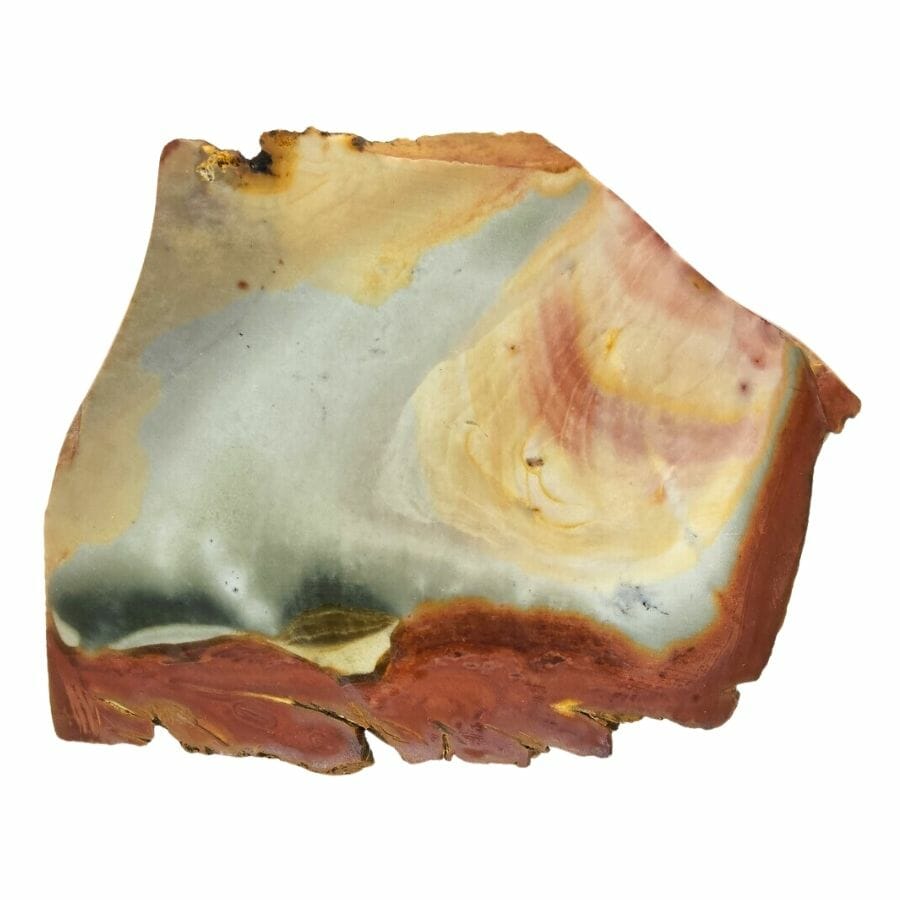
Jasper is one of the most colorful gemstones found in Tennessee! It’s a type of chalcedony, but what makes it extra special are the colors and patterns it comes in. Reds, yellows, browns, greens – jasper’s got a whole rainbow to show off.
This gemstone starts with tiny bits of minerals like quartz. These get mixed with other materials like clay and iron. Then, over time, these mixtures get buried, and nature goes to work.
With heat and pressure, all those bits stick together and harden into jasper. It’s kind of like how a beautiful painting is made, one brush stroke at a time.
Jasper’s colors and patterns make each piece unique, and people have loved using it in jewelry and decorations for thousands of years. But it’s not just pretty; jasper’s also tough and can be carved into shapes and designs.
And here’s a fun fact: Some people even think jasper has healing properties. They say it brings calmness and strength. Whether that’s true or not, one thing’s for sure: jasper is a real gem!
Where you can find jasper in Tennessee
- Bumpass Cove Mining District
- Immel Zinc Mine, Mascot-Jefferson City Zinc Mining District
- Sugar Hollow and No. 10 Iron Mine, Washington County
Selenite
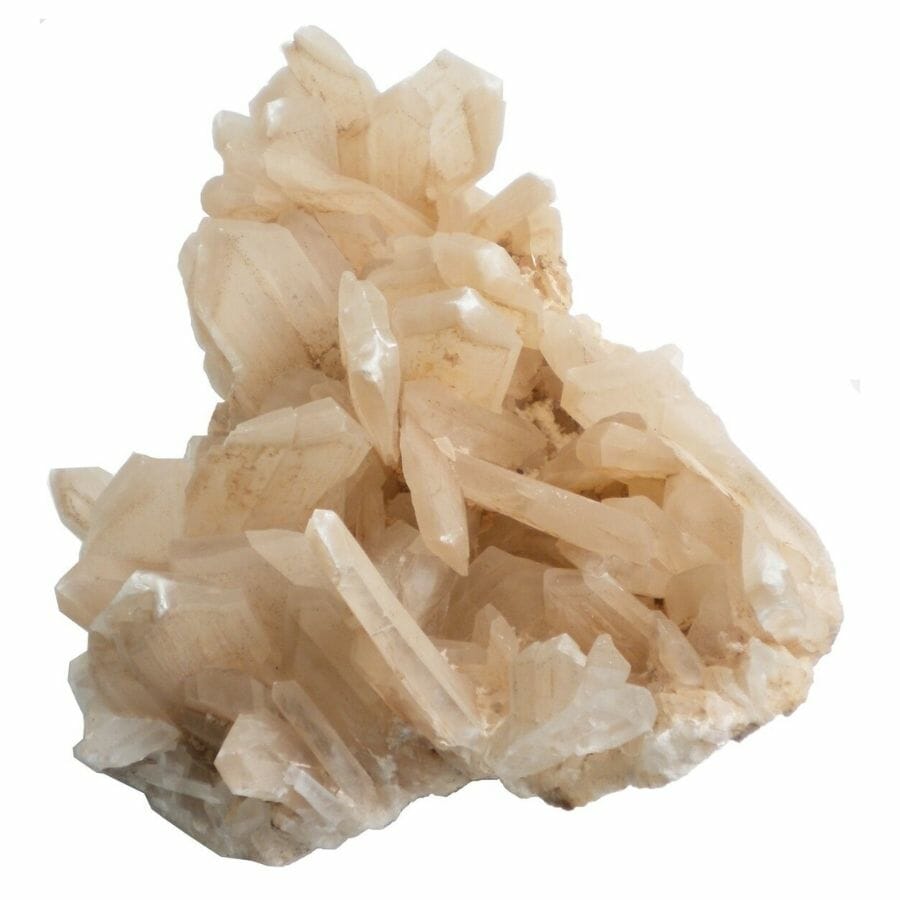
Let’s shine a spotlight on selenite, a mineral that looks like it’s straight from a fairy tale! Selenite is a form of gypsum, and it has a soft, glowing appearance that makes it look like moonlight trapped in a rock.
Imagine this: water filled with minerals is moving through the ground. As this water evaporates, the minerals get left behind and start to bond together. Slowly but surely, these minerals begin to create crystals.
If the conditions are just right, those crystals grow into the beautiful, shiny selenite we know and love.
Selenite’s appearance is simply mesmerizing. Its long, clear crystals can look like shimmering wands or delicate angel wings. It’s no wonder that people are drawn to it like moths to a flame!
Many folks love to use selenite in their homes for decoration, or even in their gardens. It adds a touch of natural wonder wherever it goes.
But there’s more! Selenite is also popular in the world of healing. Some people believe it can bring calmness and clarity to a busy mind.
Whether you’re admiring its glow or enjoying its soothing vibes, selenite has a special way of speaking to the heart.
Where you can find selenite in Tennessee
- Marion County quarries
Agate
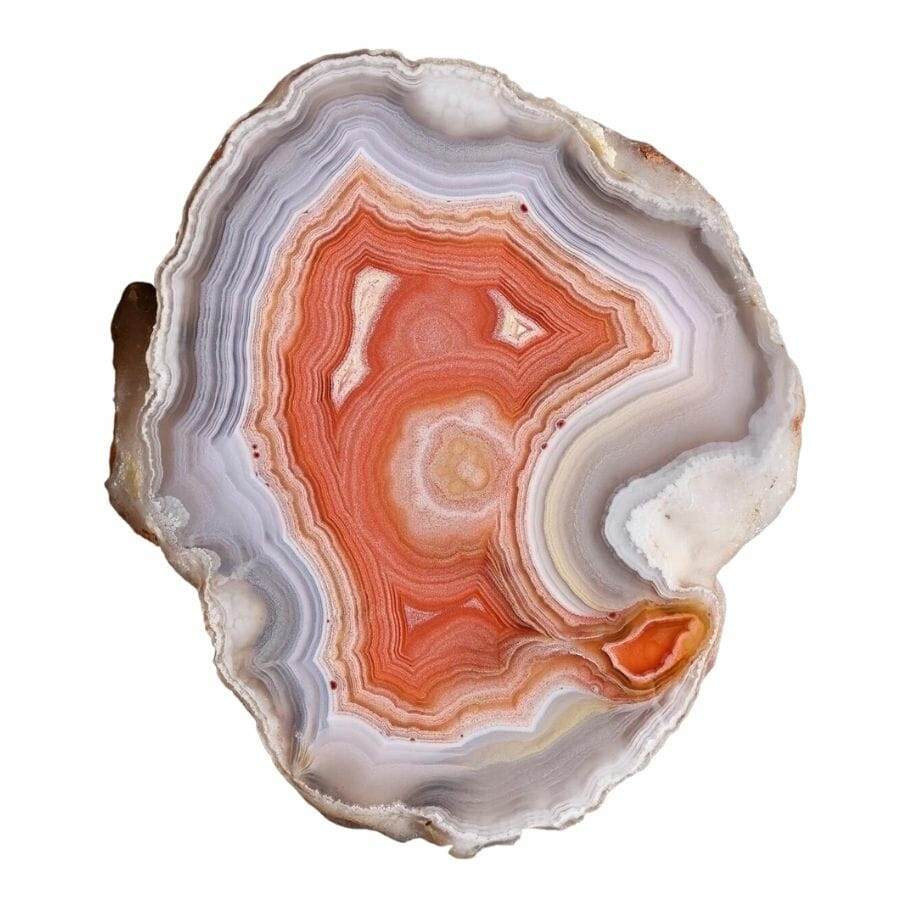
When it comes to the types of rocks found in Tennessee, agate is one of the standout stars! It’s a special kind of quartz, but what makes it unique is its stunning layers of colors.
Picture a slice of agate, and you’ll see rings of colors, kind of like the rings in a tree trunk.
Long, long ago, when cracks and hollows formed in rocks, they filled with watery goo packed with tiny minerals. As the goo began to harden, the minerals inside started to settle in layers, like how you see rings inside a tree trunk.
Over time, these layers built up to create the dazzling patterns we see in agate.
Its beautiful bands and patterns make agate a top pick for jewelry and decorations. This gemstone isn’t just pretty to look at; some folks believe it can bring balance and calm to their lives, making it a hit with those who love its vibes as much as its looks.
So, when you’re thinking of rocks and minerals found in Tennessee, remember agate and its beautiful bands. Every slice is a masterpiece, showing off the incredible artistry of Mother Nature.
Where you can find agate in Tennessee
- Silvertooth Agate Fields, Horse Mountain
- Oak Ridge Occurrence, Anderson County
- Sparta limestone quarry, White County
Celestite
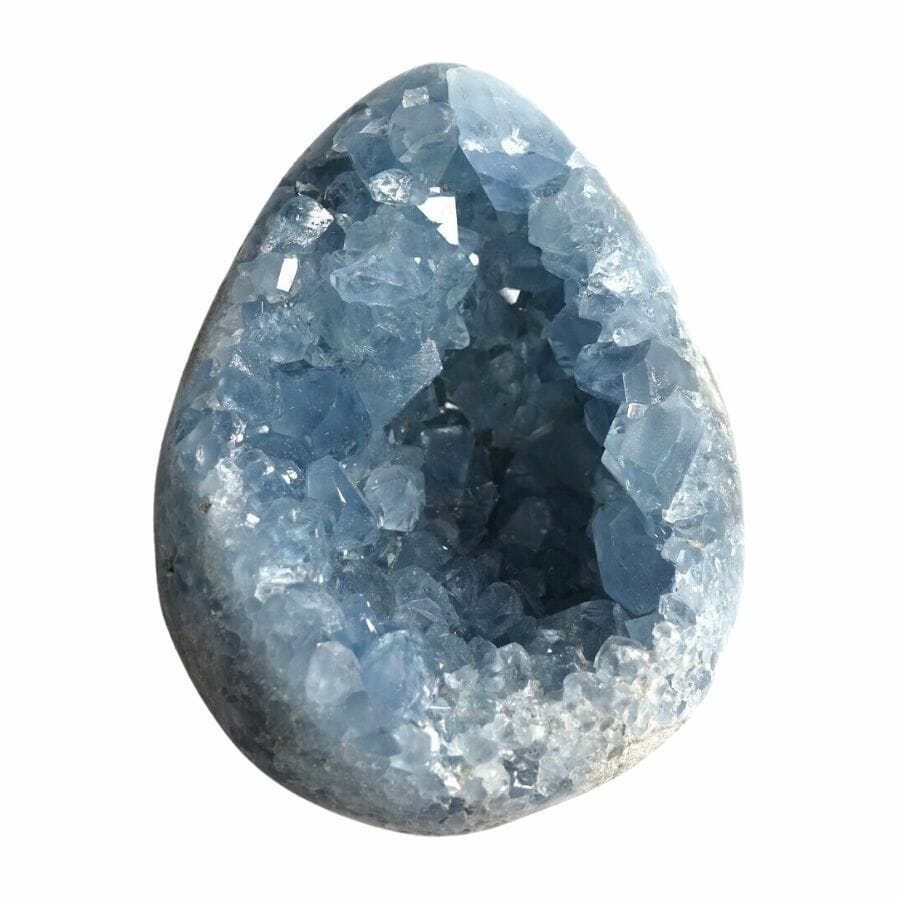
If you’ve ever seen a piece of celestite, you know it’s like holding a tiny piece of the sky. This mineral has this dreamy blue color that can remind you of a clear summer’s day in Tennessee.
Now, let’s dive into how celestite is formed. Picture water deep underground, filled with minerals. As the water moves through rocks, it leaves behind certain minerals that begin to join together.
Over time, they form crystals. These crystals then grow bigger and bigger, giving us the sparkling celestite we see.
Celestite’s soft blue glow is a real eye-catcher. It’s perfect for jewelry and decorations, adding a touch of Tennessee’s natural beauty to your home.
But celestite’s charm goes beyond its looks. Some people believe that celestite has calming properties, and they use it to create peaceful spaces.
In the grand landscape of Tennessee’s mineral wonders, celestite shines brightly. It’s a testament to the amazing things that happen deep down in the Earth. Every chunk of celestite is a tale of time, water, and Earth’s geological processes.
Where you can find celestite in Tennessee
- Van Buren County Highway Department quarry (Pit No. 394), Spencer
- Nashville Quarry, Davidson County
- Buffalo Cove Quarr, Buffalo Cove
Carnelian
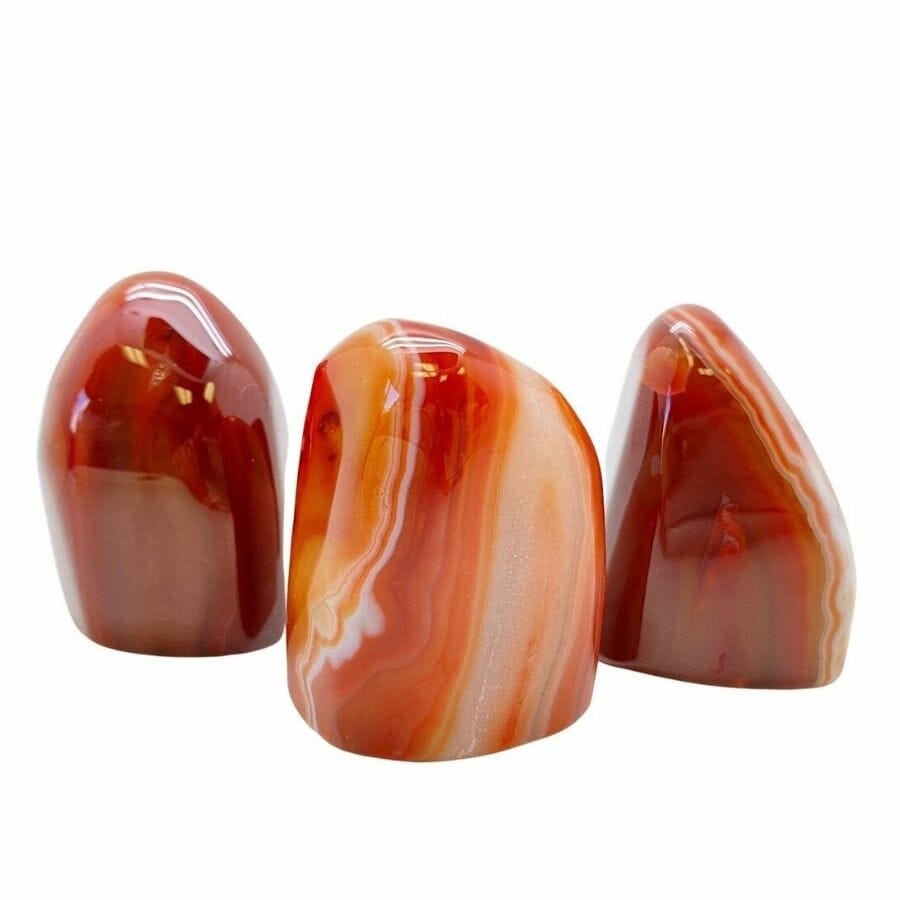
Carnelian is a type of chalcedony. But instead of the soft colors we often see in chalcedony, carnelian is all about bold reds and oranges. It’s like a little ember you can hold in your hand!
Imagine groundwater moving through rocks, carrying with it tiny particles of iron. As the water seeps into cracks and spaces in rocks, it leaves behind the silica, which starts to stick together.
Over time, iron gets added to the mix, and it’s this iron that gives carnelian its fiery colors. Slowly but surely, the stone hardens and forms carnelian.
Among the gemstones found in Tennessee, carnelian truly stands out. Its warm colors are super eye-catching, making it a hot pick for jewelry.
It’s also been loved for centuries by civilizations all over the world. Today, in Tennessee and beyond, many treasure it for its beauty and for the energy it’s believed to bring.
Some also say that wearing carnelian can boost your confidence and creativity!
Where you can find carnelian in Tennessee
- Tullahoma, Coffee County
- Silvertooth Agate Fields, Horse Mountain
Azurite
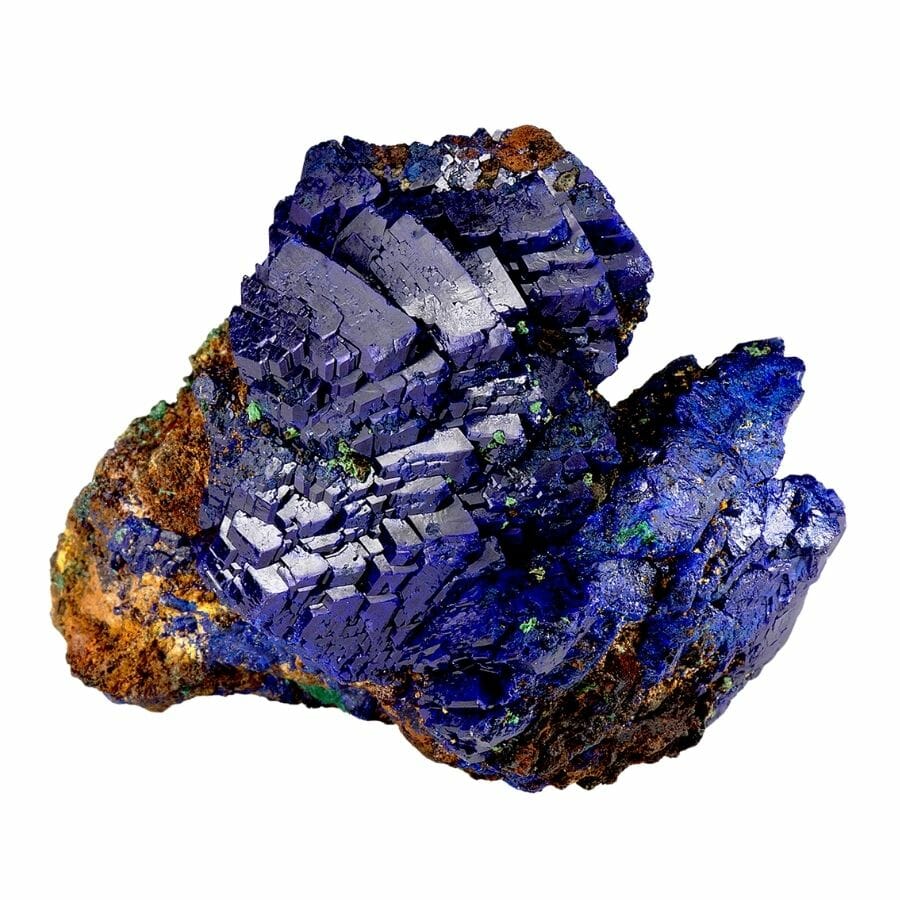
If the sky had a twin in the rock world, it would be azurite. This gem boasts a deep, dreamy blue that can make you think of a vast ocean or a midnight sky.
Let’s unravel the mystery of how azurite comes to be. Picture copper minerals in the ground, just hanging out. When water carrying oxygen and carbon dioxide passes by these minerals, it reacts with them.
This reaction, over time, results in the creation of azurite. With the right conditions, nature can turn basic minerals into something as stunning as azurite!
Azurite’s rich blue hue is a showstopper. Throughout history, people have crushed azurite to use its vibrant color in paints and dyes.
Besides being a natural pigment, azurite is also a hit among jewelry and gem collectors. Its mesmerizing color makes any piece stand out.
Plus, some folks believe azurite helps enhance intuition and awareness.
In the grand rock collection of Tennessee, azurite shines like a sapphire star. It’s a blend of Earth’s chemistry and artistry.
Where you can find azurite in Tennessee
- Ducktown Mining District, Polk County
- Baker Hill, Livesay Mills
The Crystals Found in Tennessee
Tennessee is home to natural wonders deep beneath the surface. Crystals are part of Tennessee’s hidden charm! Learn more with the help of our comprehensive guides:
Wavellite
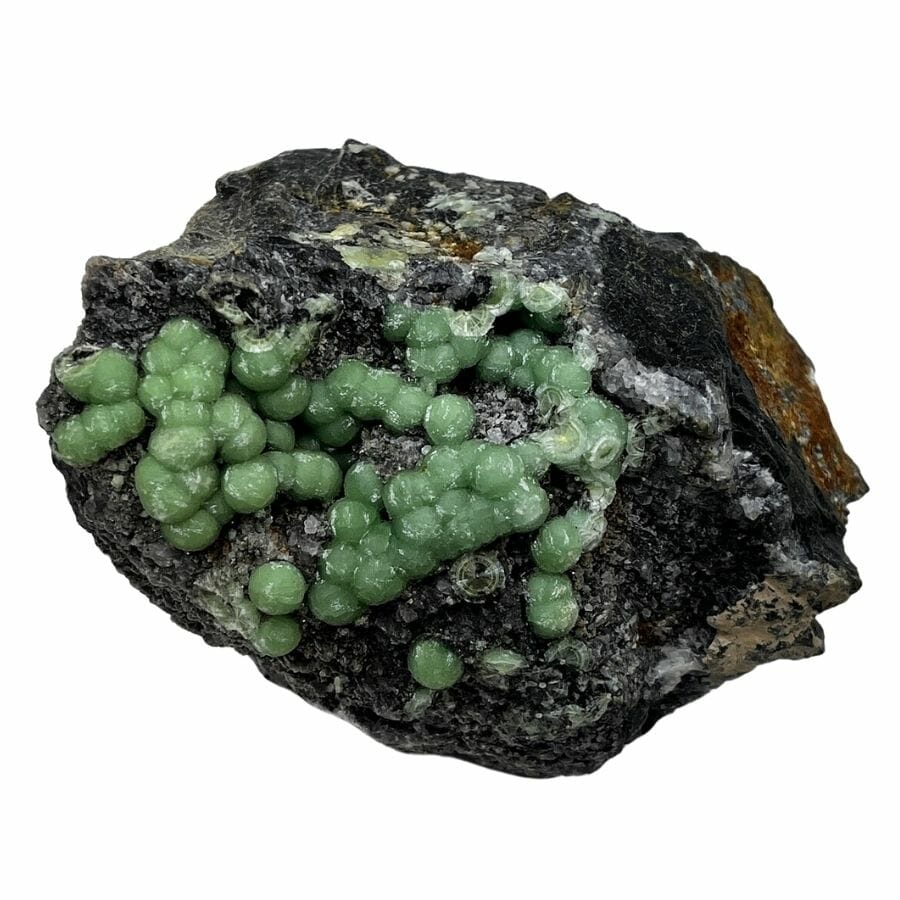
Let’s set our sights on a mineral that’s got a groovy name and looks even cooler: wavellite! This mineral is unique, and its appearance will make your eyes pop.
Imagine a rock surface covered in green, yellow, or even colorless radial clusters that look like little starbursts.
Picture this: there’s a rock with a bunch of tiny holes or cracks in it. Over time, water with special minerals in it flows through these spaces.
As this water slowly drips and leaves the rock, the minerals start forming those unique round patterns that we know as wavellite.
People have a soft spot for wavellite because of its unique patterns. They’re super cool to look at and can make for some pretty unique jewelry or decorations.
Plus, for curious minds, just thinking about how each circle forms from water and minerals is a story in itself.
In the wide world of rocks and minerals found in Tennessee, wavellite has its special place. It’s a testament to the beauty that can form when water, minerals, and a bit of time come together.
Where you can find wavellite in Tennessee
- Wood Mine, Del Rio Mining District
- Sylvia Prospect, Greene County
- Taylor Ridge Manganese Mine, Stony Creek Mining District
Epidote
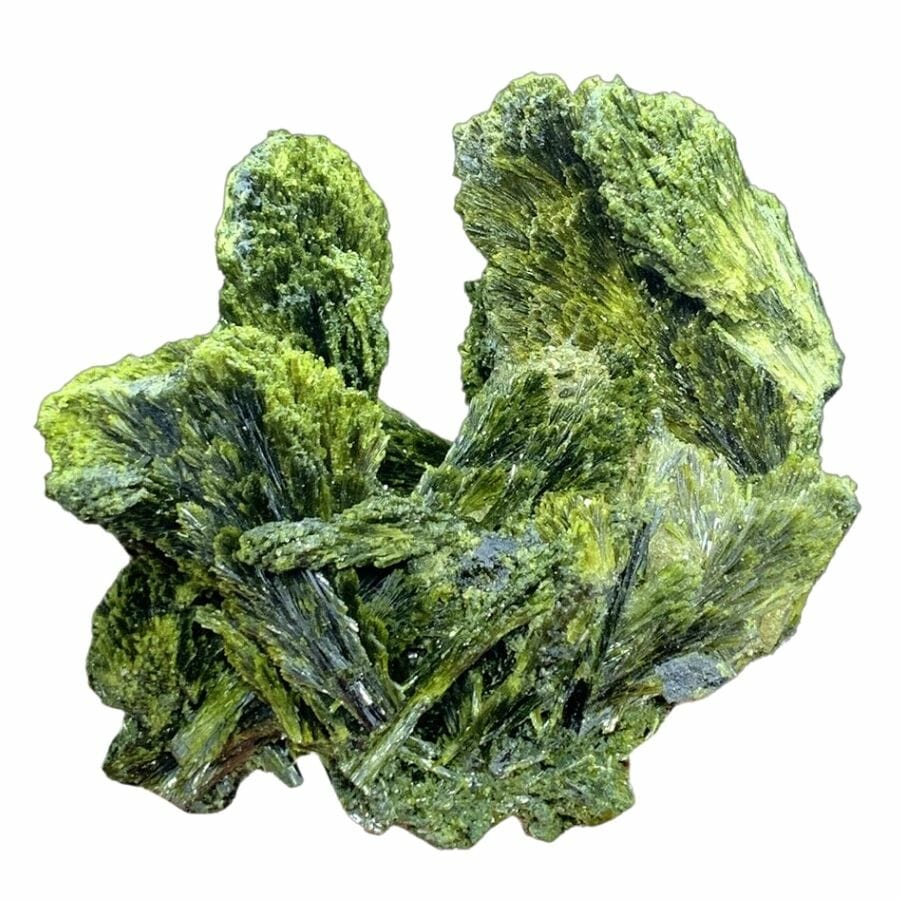
If you ever come across a green or yellowish-green mineral with a kind of glassy shine, there’s a good chance you’re looking at epidote. Its colors are like the forests of Tennessee in the springtime.
Now, the backstory of epidote is pretty cool. This mineral forms when rocks get exposed to heat and pressure, kinda like when a cake bakes in the oven. Over a long time, certain rocks start to change and transform.
And if there’s enough of the right ingredients, like calcium and iron, they come together to form the sparkling epidote.
That beautiful green color is something to write home about. It’s used in jewelry and collections, and it adds a touch of Tennessee’s natural beauty to any display.
Epidote also has a special way of reflecting light, which makes it sparkle in a unique way.
Geologists also love epidote because it tells a story about the history and conditions of the area where it’s found.
Where you can find epidote in Tennessee
- Teegarden Magnetite Mine, Cranberry Magnetite Mining District
- Chestnut Ridge Magnetite Prospects, Cranberry Magnetite Mining District
- Miller Magnetite Prospect, Walnut Mountain Mining District
Fluorite
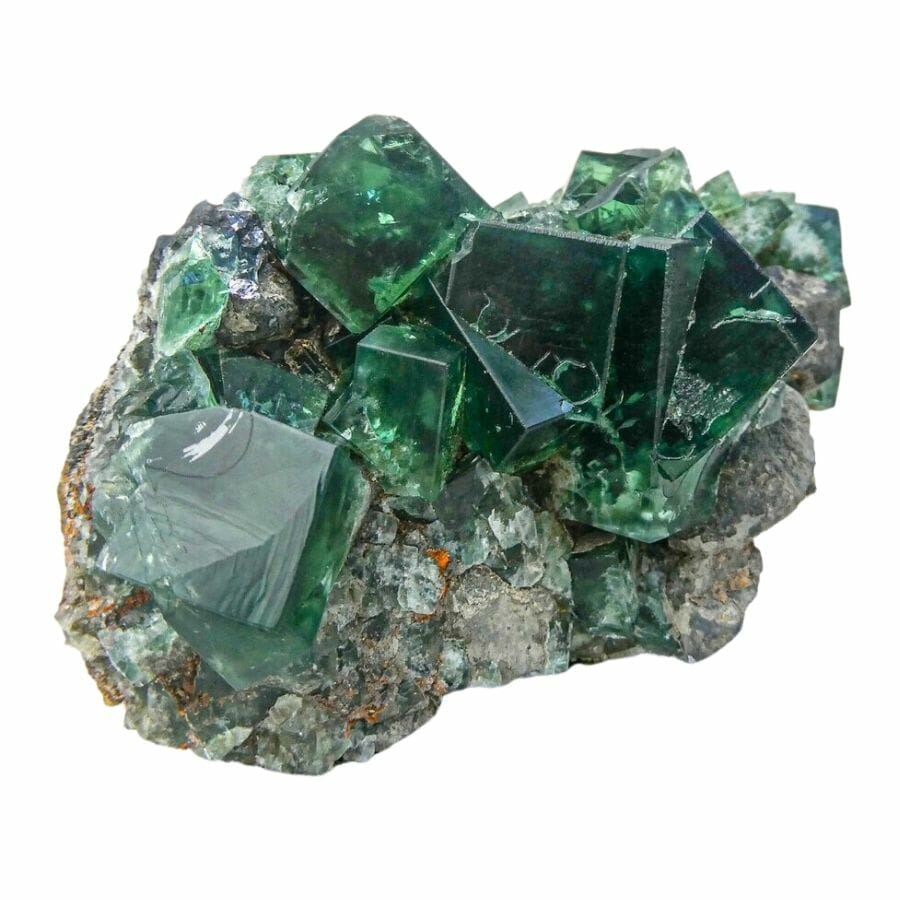
Imagine a mineral that can be clear as glass or as vibrant as the rainbow. That’s fluorite! It comes in so many shades – purple, green, blue, and even yellow. Sometimes, all these colors can be in one single piece.
Deep down in the Earth, there are hot liquids full of different minerals. Sometimes, these hot liquids get into cracks in the rocks, and when they cool down, they leave behind some really cool crystals.
If the conditions are just right, fluorite can form, creating those beautiful colors.
Fluorite is prized for its colors. It’s like having a piece of the sky, grass, and sunshine all in one stone! People love to use it for jewelry and decoration because it’s so pretty. Fluorite also glows under ultraviolet light!
Beyond its beauty, fluorite is also super useful. It’s been mined to help make things like steel and even the fluoride in our toothpaste.
Where you can find fluorite in Tennessee
- Rockway Quarry (Limestone Products Corp.), Colonial Heights
- No. 4 Shaft, Elmwood Mine, Carthage
- Gordonsville Mine, Carthage
Marcasite
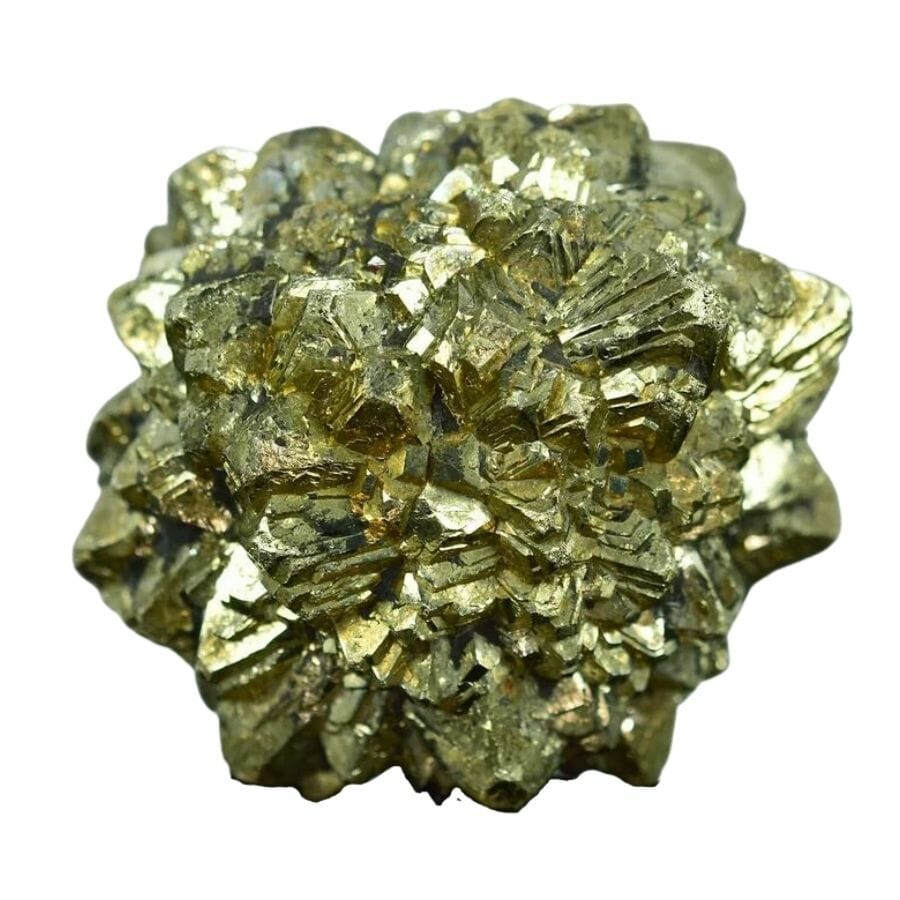
Let’s talk about a real gem: marcasite! If you’ve ever seen shiny, metallic crystals that look like they’re straight out of a fairy tale treasure chest, then you’ve probably seen marcasite.
It has a golden or silver sheen that can sparkle brilliantly, almost like it’s winking at you from the ground!
Now, marcasite isn’t the same as fool’s gold, but it does share a family resemblance. It’s shiny and has a gold-ish, silver-ish look that glimmers in the light.
It forms when iron and sulfur hang out together under the right conditions, deep down in the Earth’s crust. Over time, they bond and create those gleaming marcasite crystals.
Marcasite is quite a big deal because of its sparkle. Many people love to use it in jewelry because it gives that beautiful shimmer without the big price tag of some other gems.
But marcasite isn’t just a pretty face. Scientists and rock lovers also study it to learn about how minerals form and what conditions were like underground in ancient times.
Where you can find marcasite in Tennessee
- Tri-Cities Airport quarry, Sullivan County
- Elmwood Mine, Carthage
- Eve Mills Prospect, Monroe County
Barite
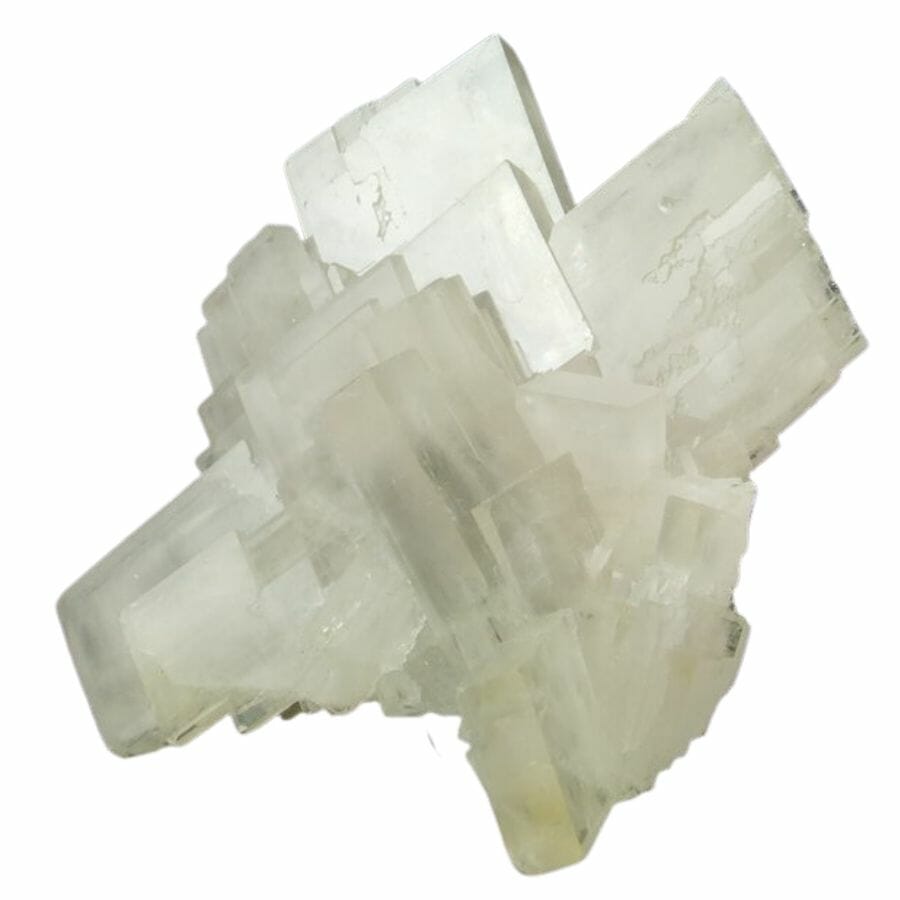
When diving into Tennessee rock identification, one gem you might come across is barite. It can be clear, white, or even take on colors like blue, yellow, and brown. Its crystals come in different shapes and can look like plates or long, pointy spikes.
But the coolest part? It’s heavy for its size. If you ever get to hold a piece, you’ll feel its surprising weight!
Barite forms in some really interesting ways. Sometimes, it grows when hot water that’s been hanging out deep underground mixes with certain minerals. As the water cools down, barite begins to crystallize.
Picture it like sugar crystals forming on a string, but way cooler and underground!
Of course, this mineral barite isn’t just cool to look at. It has some super handy uses, too! People grind it up to put in things like paint, rubber, and paper. It gives products weight and helps them stay sturdy. Plus, it’s even part of the process for drilling oil.
Where you can find barite in Tennessee
- Lost Creek Barite Mine, Clinch Valley Area
- Ballard Mine, Sweetwater Barite Mining District
- Williams Mine, Del Rio Mining District
Cerussite
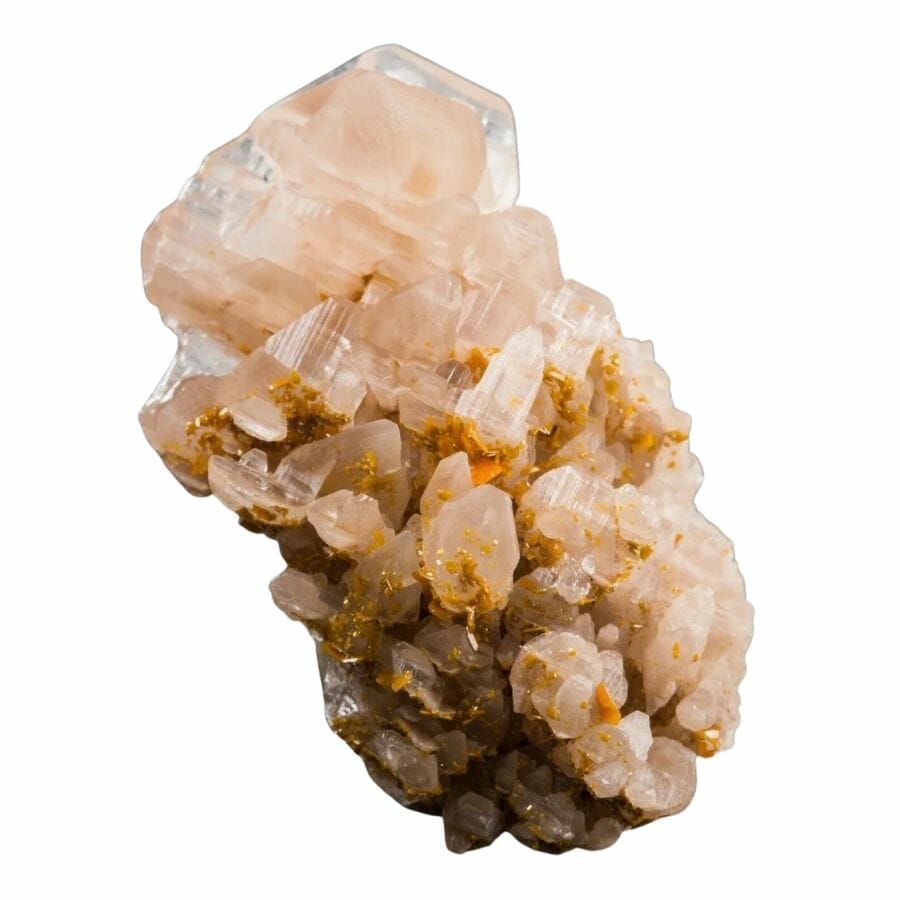
Cerussite sounds like a fancy name, and its looks live up to it. It’s often clear or white, but can sometimes appear gray or even tinted with shades of green or blue.
When light hits it just right, cerussite can sparkle and shimmer, making it a treat for the eyes!
The journey of cerussite starts deep within the Earth. It forms when certain rocks rich in lead start to break down. When lead gets together with carbon and oxygen, they create this beautiful mineral.
Collectors and scientists alike value cerussite for its beauty and its unique properties. Its sparkle makes it attractive for jewelry and decoration.
But it’s not just a pretty face; cerussite also tells the story of the land it came from, like a geological diary filled with secrets of the past.
Beyond its beauty, cerussite has a rich history in the world of minerals. Back in the day, people discovered they could get lead from it, which had tons of uses, from making pipes to crafting bullets.
Nowadays, while we might not use cerussite for lead as much, it’s still treasured by collectors and rock enthusiasts for its beauty and significance.
Where you can find cerussite in Tennessee
- Felknor mine, White Pine Mining District
- Bumpus Cove mining district mines
Smithsonite
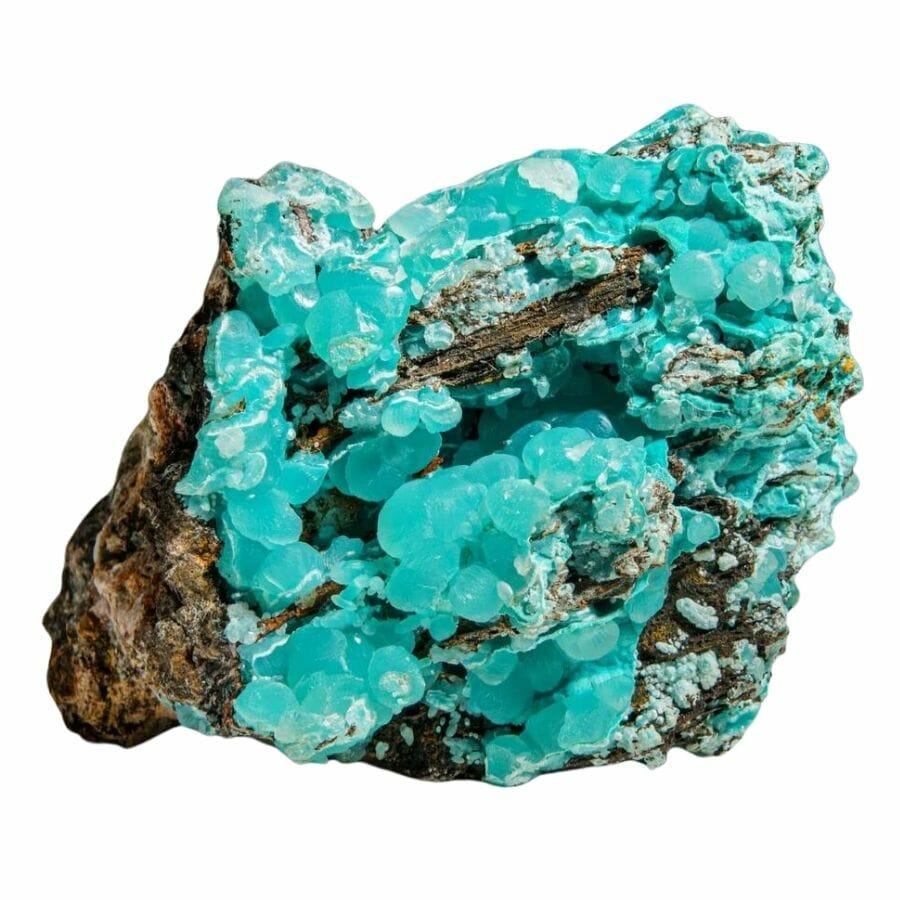
Smithsonite might not be a mineral that everyone’s heard of, but once you get to know it, you’ll see why it’s something special.
Imagine a mineral that’s smooth to the touch, kinda like bubblegum, but much harder and way more dazzling.
Smithsonite can be pink, green, blue, or even yellow. Sometimes, it can shimmer like the surface of a calm pond catching the morning sun.
Smithsonite’s origins is a fun story of transformation. When zinc ore, the stuff deep in the Earth that contains zinc metal, gets exposed to the air and rainwater, a change happens.
This mixture reacts with the zinc ore, and over time, the once ordinary rock changes into the beautiful smithsonite.
This mineral has been spotted in some of Tennessee’s coolest caves and rocky areas. It’s rich in zinc, which is super useful in things like batteries, metal coatings, and even some medicines.
That means this sparkling stone is more than just eye candy; it’s a hard worker, too!
In the grand collection of crystals found in Tennessee, smithsonite is a standout star. Its dazzling colors, interesting formation, and valuable uses make it a real treasure.
Where you can find smithsonite in Tennessee
- Watauga Point zinc prospect, Hampton Mining District
- Rock Quarry Hollow Zinc Mine, Washington County
- Tipton Prospect, Greeneville Mining District
The Most Valuable Rocks and Minerals in Tennessee
Tennessee shelters some of the most prized rocks and minerals in the world. Let’s delve into the treasures of this state and uncover its most valuable geological finds!
Tennessee river pearl
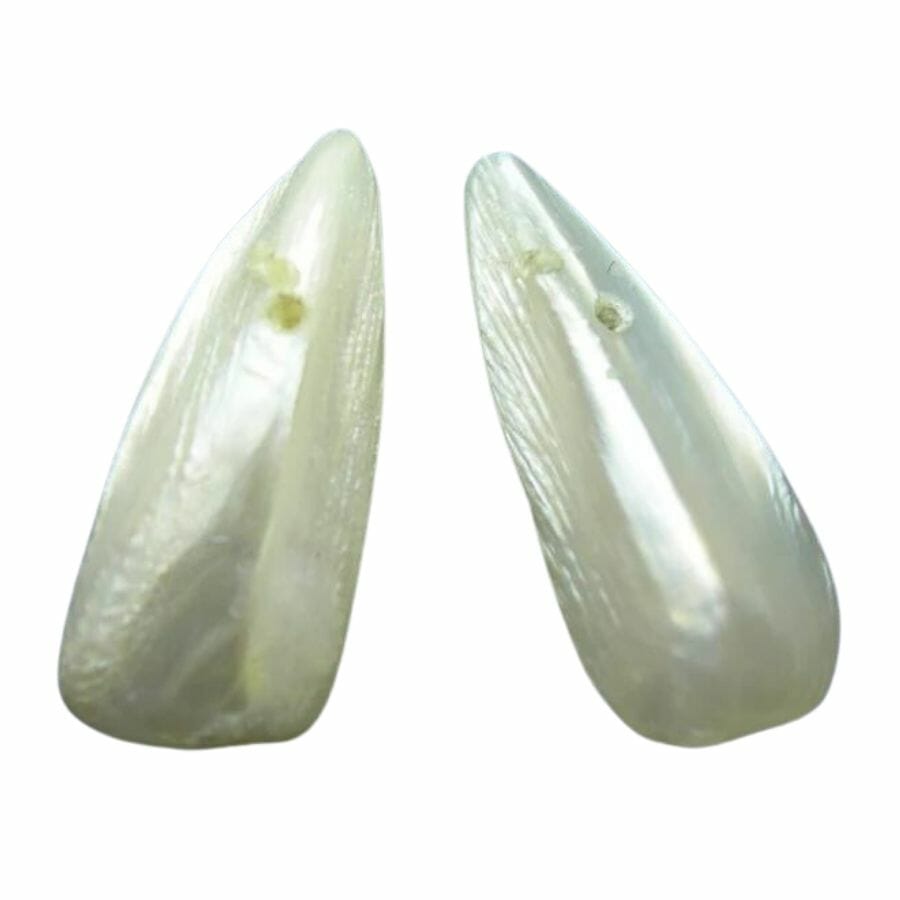
Picture a shimmering, lustrous gem with a soft glow, almost like a little moon caught in a droplet of water. That’s a Tennessee river pearl!
Here’s how it works: tiny particles, like a grain of sand, sometimes find their way inside a freshwater mussel. Now, imagine getting a tiny pebble in your shoe – super annoying, right? The mussel feels the same way!
So, to make itself comfortable, the mussel starts coating the intruding particle with layers of something called nacre. This nacre is smooth and shiny, and over time, as layer upon layer is added, we get a stunning pearl.
People value these pearls for their natural beauty and their long history in Tennessee. They tell a story of patience, growth, and the magical things that can happen in the quiet depths of a river.
Over the years, these pearls have been used in gorgeous jewelry, making them a shining example of Tennessee’s natural charm. Tennessee river pearls are a shiny example of nature’s creativity, and they’re a gem in the truest sense!
Where you can find river pearls in Tennessee
- Birdsong Resort (The Tennessee River Freshwater Pearl Farm)
Opal
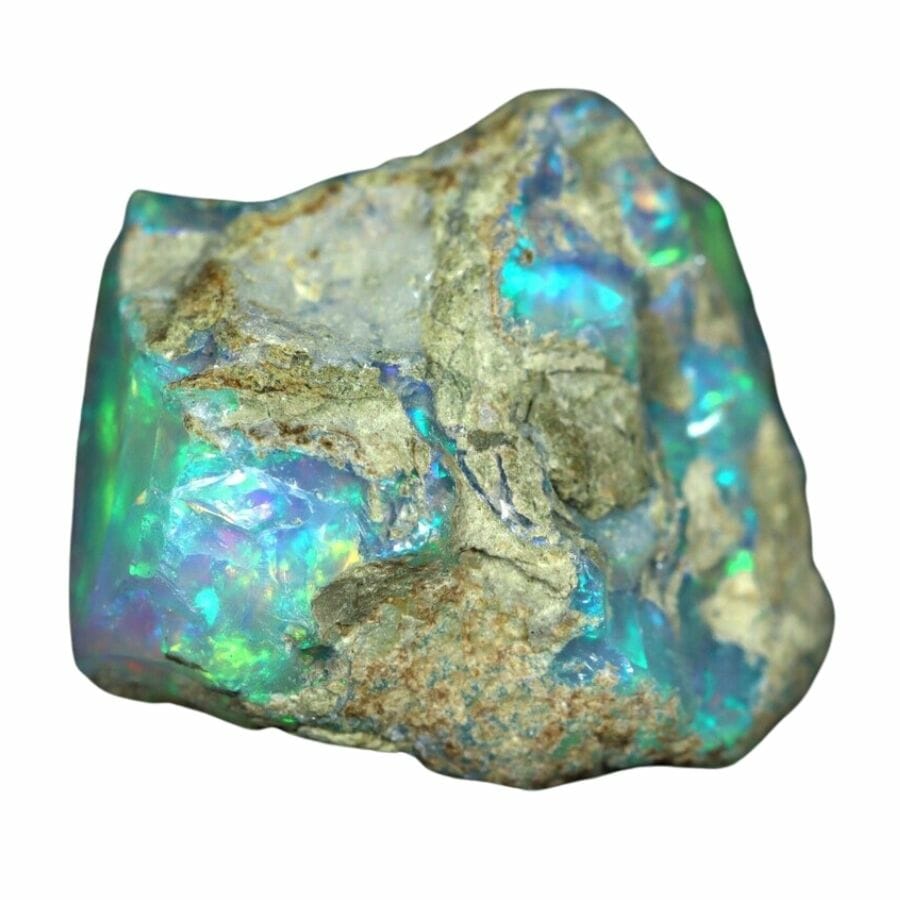
Opals look like they’ve captured a rainbow inside. With every move, they shimmer and flash with a play-of-color that’s like a dance of light. It’s no wonder many people are completely mesmerized by them.
They’re made from tiny spheres of silica. When water finds its way into cracks and crevices in the ground, it carries this silica with it. Over time, the water evaporates, and the silica gets left behind, forming these tiny spheres.
The spheres stack together, and the way they catch the light creates that magical play of colors we love in opals.
The play-of-color happens because of the way the silica particles are arranged. They bend and scatter light, creating a dance of colors that can change as the gem moves.
Among the valuable rocks in Tennessee, opals hold a special place in many hearts. Each opal is one-of-a-kind, just like a snowflake.
People have loved opals for thousands of years. In ancient times, people thought that opals brought good luck and even magical powers.
Where you can find opals in Tennessee
- Pilot Knob Prospect, Overton County
Amber
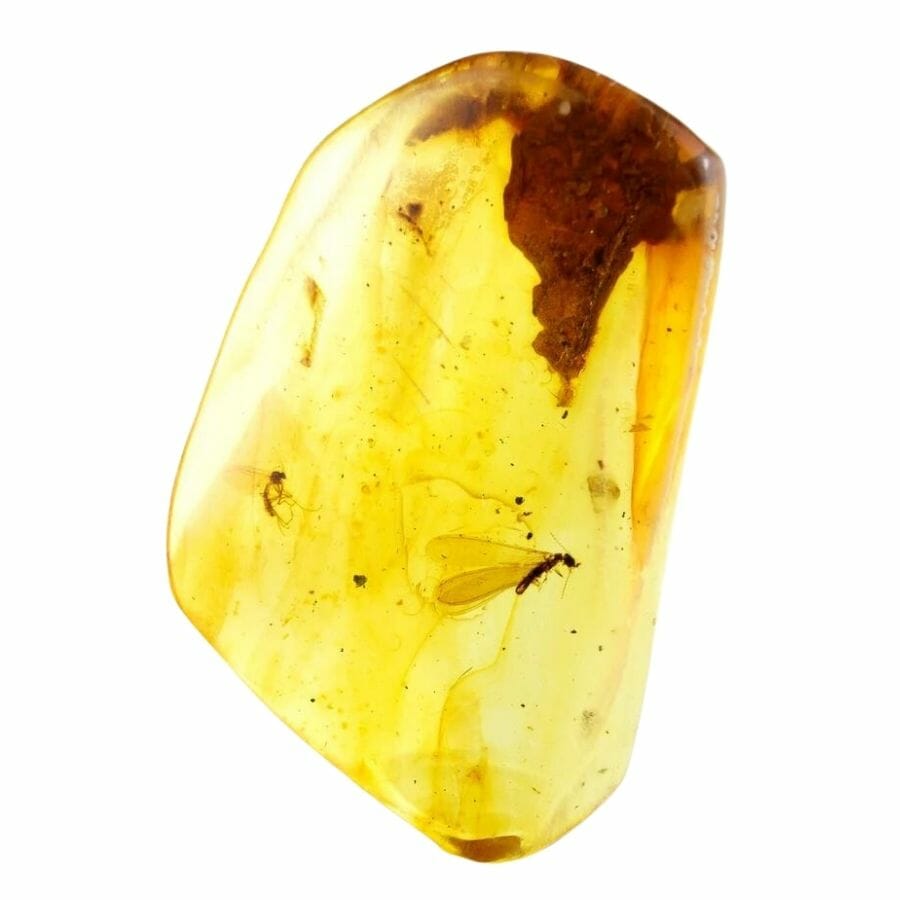
Amber is like a golden window into the past! This beautiful gem isn’t actually a rock or mineral. Amber is the fossilized resin, or sap, from ancient trees.
Imagine sticky tree sap that’s trapped all sorts of tiny objects like insects, leaves, and even water droplets. Over millions of years, this sap hardens and turns into the beautiful amber we know today.
Here’s how it happens: Trees produce resin as a protective measure, especially when they get injured. Sometimes, insects or tiny plants get stuck in this gooey resin. As years roll on, layers of soil cover the resin, and the magic begins.
With pressure from the layers above and the Earth’s natural heat, the resin slowly changes. The water inside it evaporates, and it becomes harder and harder until it turns into amber. It’s like a natural time capsule, preserving everything inside!
People have loved amber for thousands of years, not just because it looks pretty, but also because of the cool stuff trapped inside. It’s like holding a tiny piece of ancient history in your hand.
Plus, some believe amber has healing powers, bringing calm and positive energy. So, cheers to amber, the golden gem that’s a snapshot of time!
Where you can find amber in Tennessee
- Coffee Bluff, Hardin County
Garnet
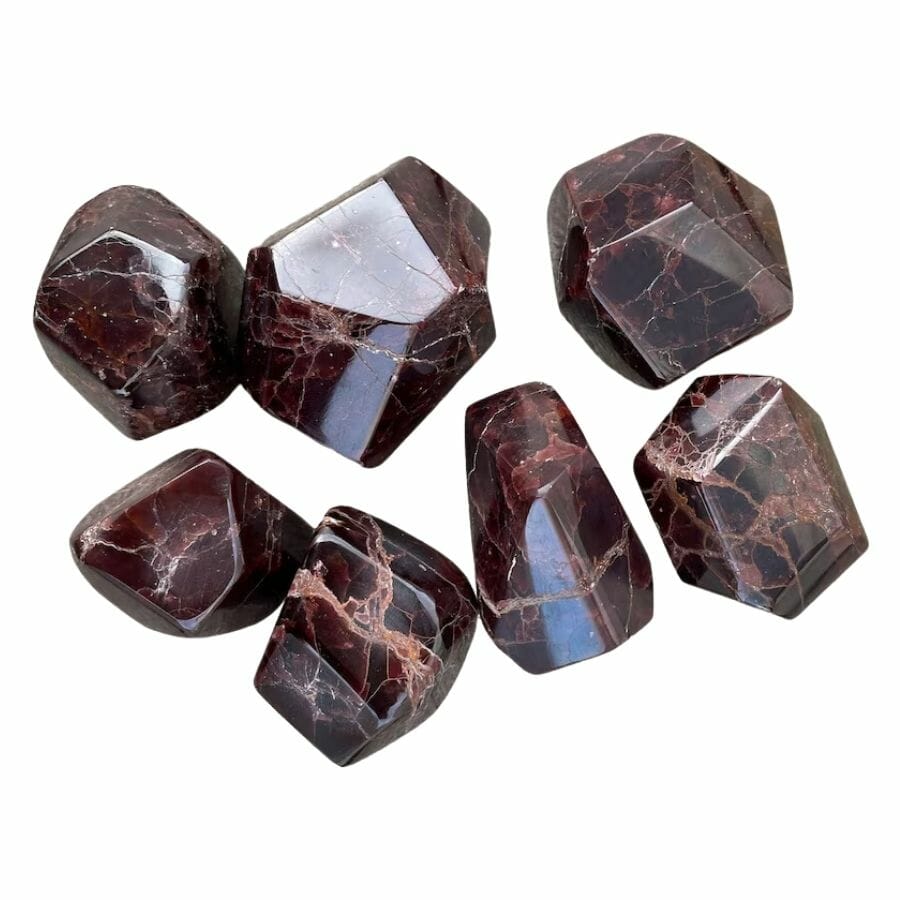
Garnet is an awesome gemstone that comes in many colors, although people often think of it as red. In Tennessee, garnet can be found in various places, and it’s a real treasure for rock lovers!
Now, let’s dive into the cool part – how garnets are formed. Picture this: deep inside the Earth where it’s super hot and packed tight, certain minerals get cozy under high pressure and heat.
Over time, these conditions cause the minerals to crystallize.
Once this happens, garnets start to form! They’re mostly found in metamorphic rocks, which are rocks that have transformed due to heat and pressure.
What makes garnet even cooler is the different types it comes in. The different types are due to the various minerals that combine.
So, you might find red garnets, green garnets, or even orange ones! Each one has its own personality, and rock lovers get really excited to see the differences.
The value of garnet can vary a lot based on its quality, color, and size. Just like with any other rock or gem, the clearer and more vibrant it is, the more valuable it might be.
Aside from its stunning beauty, garnet is also pretty tough. It doesn’t scratch easily, so it’s great for making jewelry. Because of this, people have been wearing garnet jewelry for thousands of years.
It’s also used in industry for things like sandpaper because of its hardness.
Garnet has history, beauty, and strength, all wrapped up in one sparkling gemstone. If you’re in Tennessee and stumble across a garnet, you’ll know you’ve found something that has been created deep inside the Earth, over millions of years.
Where you can find garnet in Tennessee
- Burra Burra Mine, Polk County
- Cherokee Mine, Copperhill
- Old Forge Magnetite Mine, Cranberry Magnetite Mining District
How to Identify The Rocks and Minerals Found in Tennessee
Tennessee’s earth holds a dazzling array of gems, crystals, and rocks, each with its own unique character. Whether it’s the sparkle of a gem or the structure of a crystal, there’s a world of discovery beneath our feet!
Let’s journey together into the heart of Tennessee to learn the art of identifying these geological wonders, uncovering secrets hidden for millions of years.
Shine it under a UV light
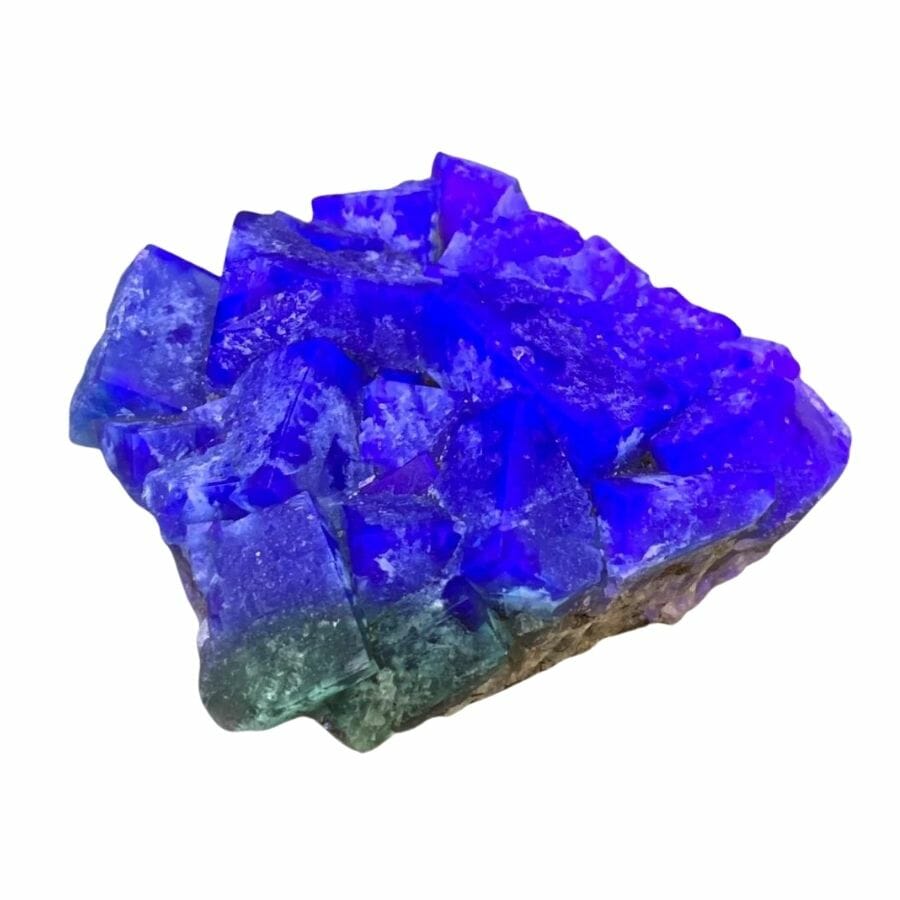
When we talk about fluorescence, we’re referring to the cool ability some rocks and minerals have to glow under ultraviolet (UV) light.
Picture this: you’re in a dark room with a special UV flashlight, and when you shine it on certain rocks, they light up in amazing colors!
There are two types of UV light: short-wave and long-wave. Some minerals might glow under one type but not the other. So, having both can be super handy.
Some minerals glow because certain elements within them get excited by the UV light and give off visible light as a response.
For example, if you ever come across fluorite, you’re in for a treat. It can glow in a range of colors under UV light, from blue to green, and sometimes even purple.
Rubies, those beautiful red gems, can glow a bright red under UV light. Some opals might give off a greenish or yellowish glow. This glowing trait can be like a secret signature for each mineral, helping us figure out who’s who in the rock world.
Test out its hardness

One of the best tools in your Tennessee rock identification detective kit is the Mohs Scale of Hardness. It’s like a rating system for how hard or soft a mineral is.
The scale goes from 1 to 10, with talc at the soft end (1), and diamond, the hardest natural substance on Earth, at the tough end (10).
Here’s how it works: you take your mystery mineral and try to scratch it with something that has a known hardness. If it scratches easily, it might be closer to the soft end of the scale. If it’s tough to scratch, it’s probably closer to the hard end.
You can even use common items like a fingernail (hardness of 2.5), a copper penny (3), or a steel nail (5.5) to do the testing.
Imagine finding a gem and discovering that it can scratch glass but not be scratched by a steel nail. That puts it at a 6 or 7 on the scale, so it could be something like quartz!
This hardness test is a fun and practical way to get to know minerals and even some gemstones. By figuring out where they fall on the Mohs Scale, you’ll be one step closer to solving the rock’s mystery.
Test for magnetism
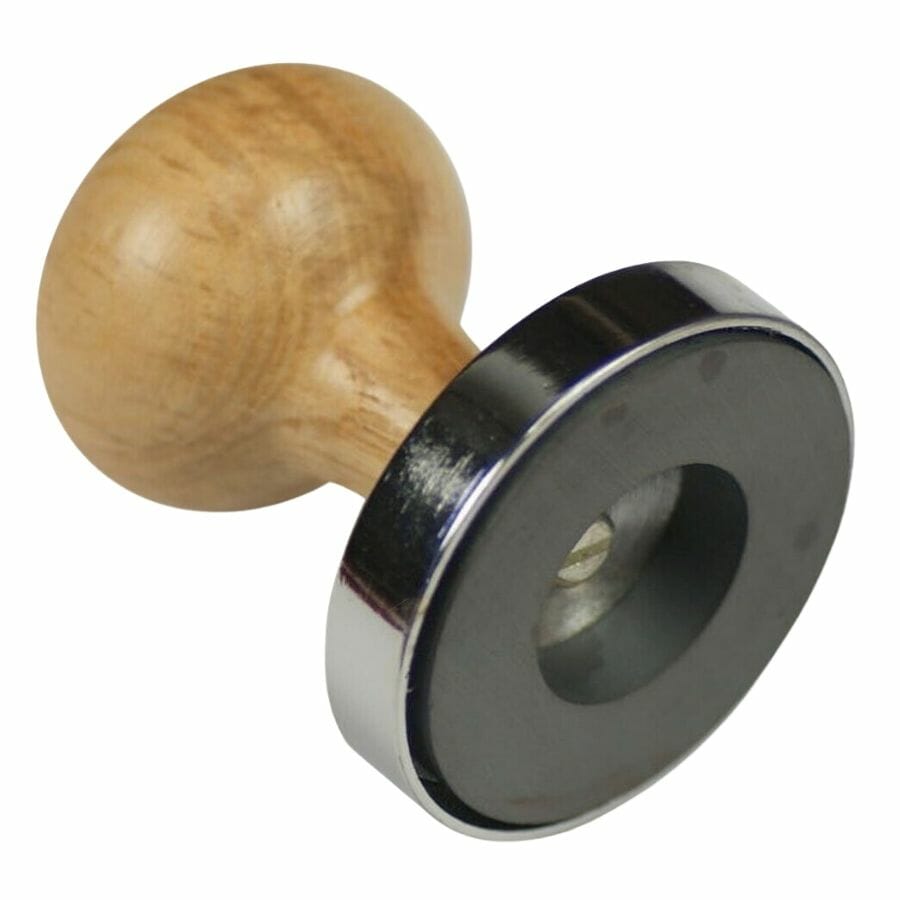
Magnetism is one of the coolest ways to identify certain rocks, minerals, and gems.
Now, not all rocks and minerals are magnetic, but some are. This means they are attracted to a magnet or can become magnetized themselves.
One of the most famous magnetic minerals is magnetite. It’s so magnetic that if you place a magnet near it, the two will snap together like best friends.
Other minerals might show only a weak attraction or none at all. That’s one way you can tell them apart.
Some rocks are made of different minerals mixed together. If one of those minerals is magnetic, the whole rock can show a magnetic reaction.
So if you want to know if a rock or mineral is magnetic, you can simply hold a magnet near it and see if there’s any attraction. If there is, you’ve unlocked one more clue about what that rock or mineral might be.
Measure its refractive index and dispersion
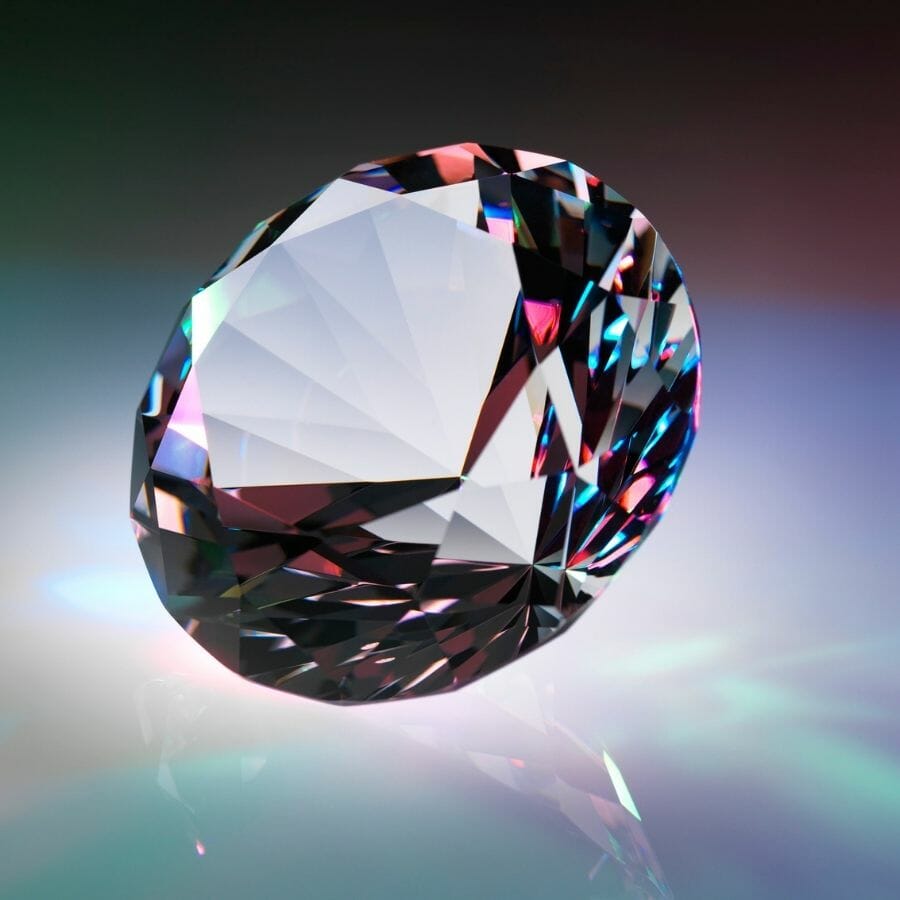
The way light plays inside a gemstone reveals secrets about its identity. This magic is all thanks to something called the refractive index.
The refractive index is like a gemstone’s fingerprint. It tells us how much a gem slows down light that zips through it.
Different gems have their own unique refractive index, making it a cool way to tell them apart. If two gems look almost the same, their RI can help us figure out which is which.
To measure this, gem experts use a nifty tool called a refractometer. When they place a gemstone on it and shine a light, the tool reads the gem’s RI and tells us what it is.
Some gems have an extra sparkle called dispersion. It’s the gem’s way of splitting light into all the colors of the rainbow, just like a prism.
By checking both the refractive index and how the gem displays those rainbow colors, we can learn even more about its true nature.
Acid test
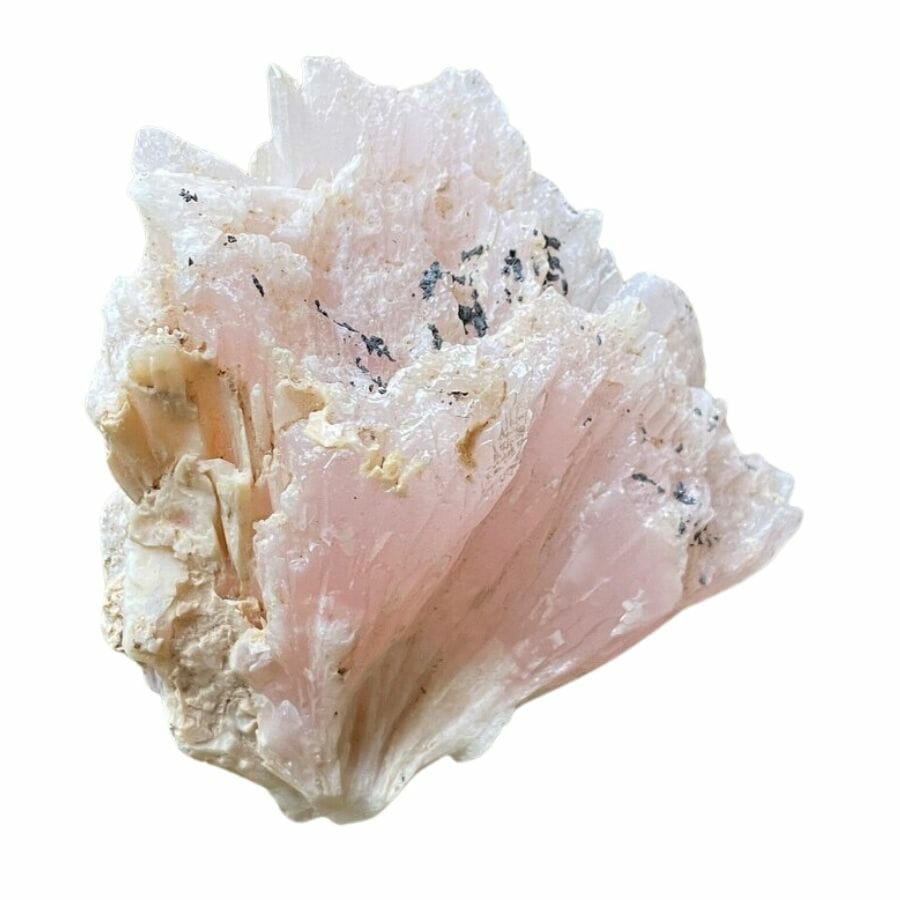
Before we dive in, always remember to be safe. When using acids, even if they’re weak, you should wear gloves and be careful.
When some minerals come in contact with a bit of acid, they start to fizz and bubble. It’s like when you pour a fizzy drink and see all those little bubbles race to the top. This reaction can be a big hint about what that mineral is.
The reason for the fizz is the acid reacting with the mineral and releasing gas.
One of the best-known minerals that tends to fizz in acid is calcite. So if you drop a tiny bit of dilute hydrochloric acid on a rock and it fizzes up, there’s a good chance you’ve got yourself some calcite!
But be aware, looks can be deceiving. You might think you have calcite because it’s shiny or has a certain color, but then there’s no fizz when the acid touches it.
That could mean it’s another mineral, like quartz, which won’t give you any bubbles no matter how much you wish for them.
Using the acid test is like having a backstage pass into the secret world of minerals. It can reveal the true nature of a rock, even if it’s trying to disguise itself as something else.

